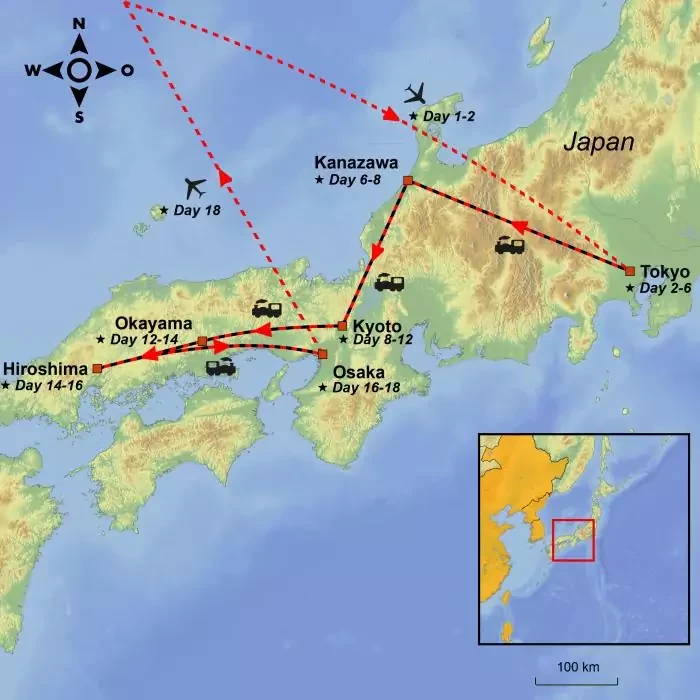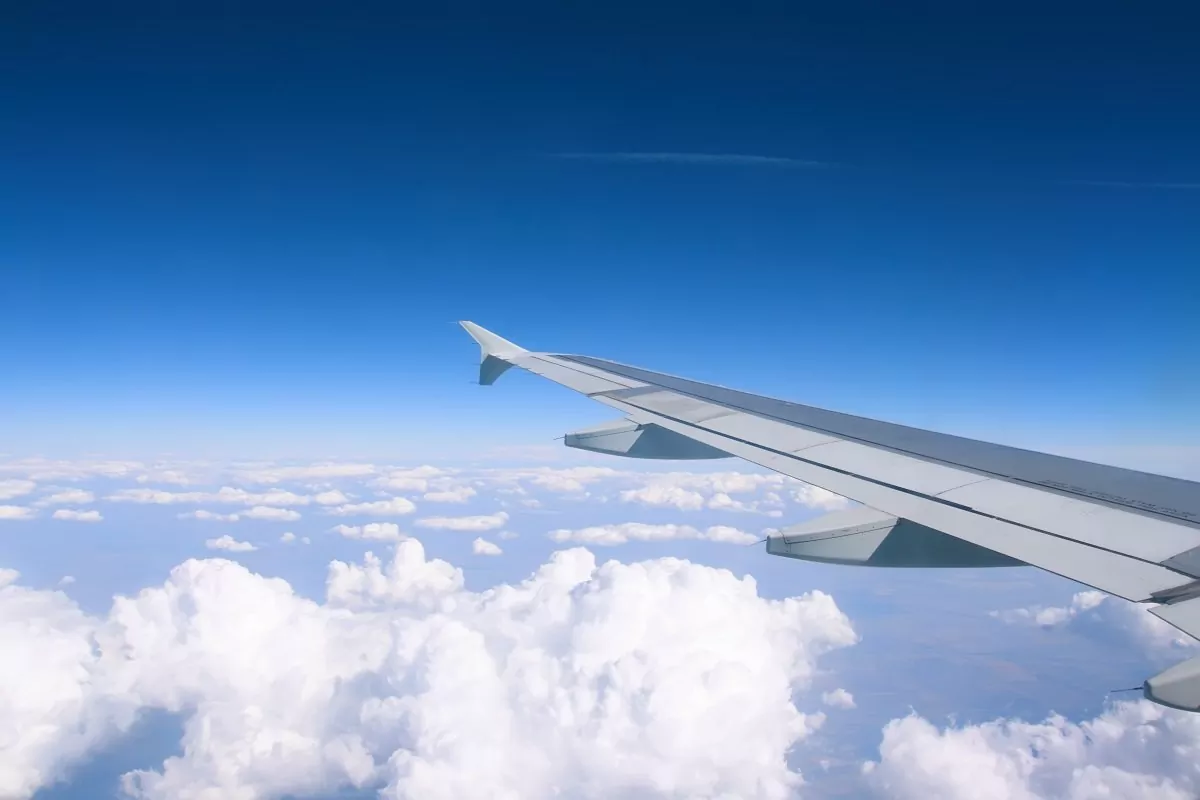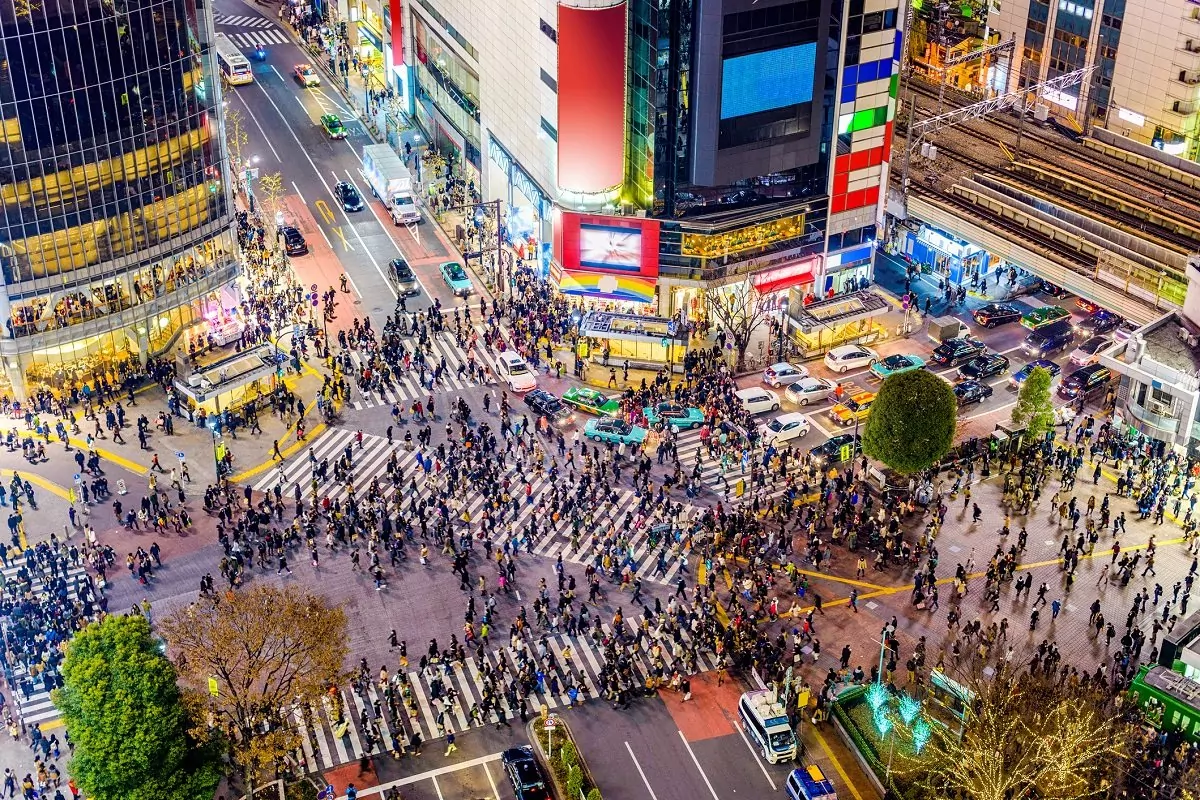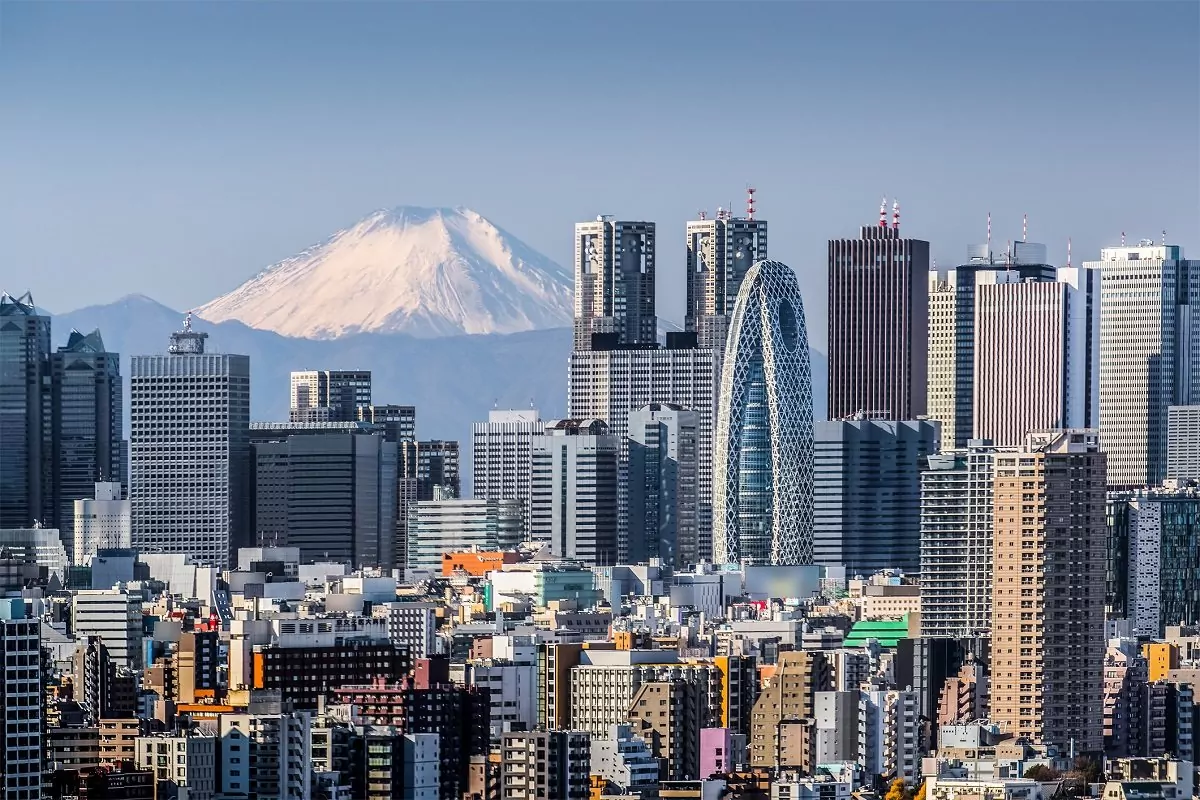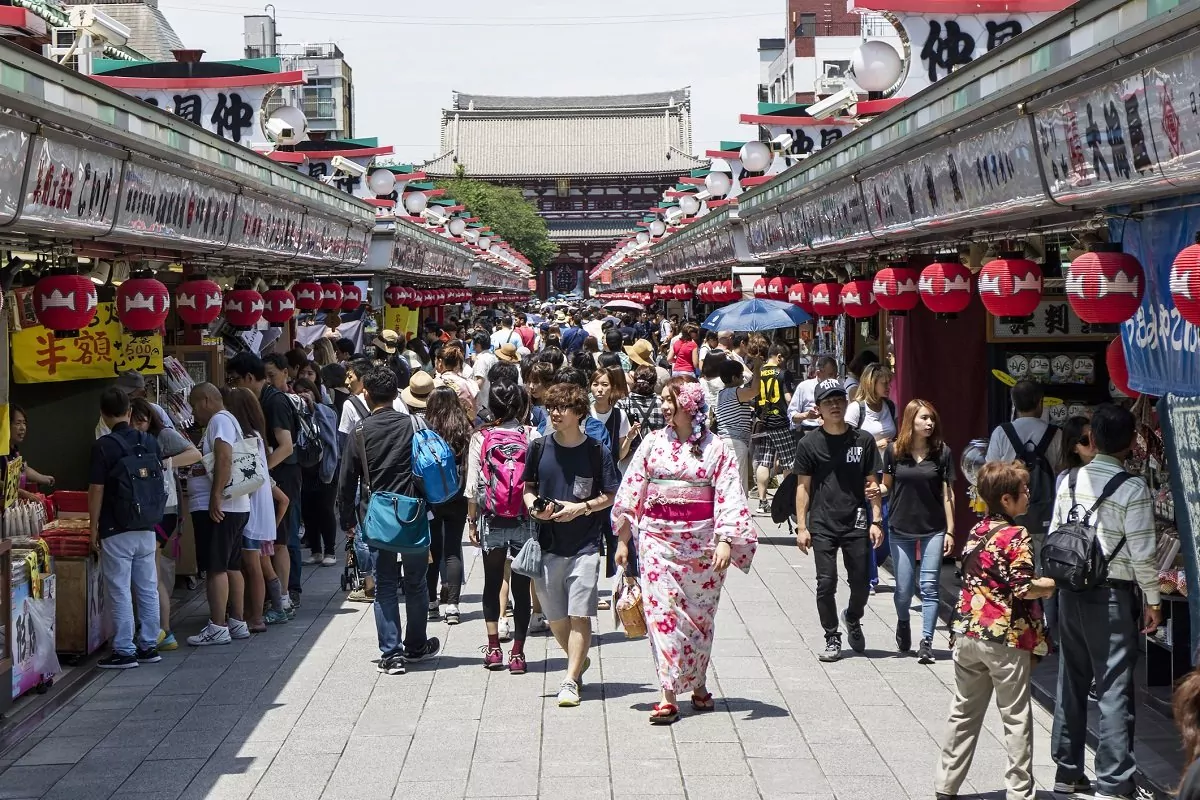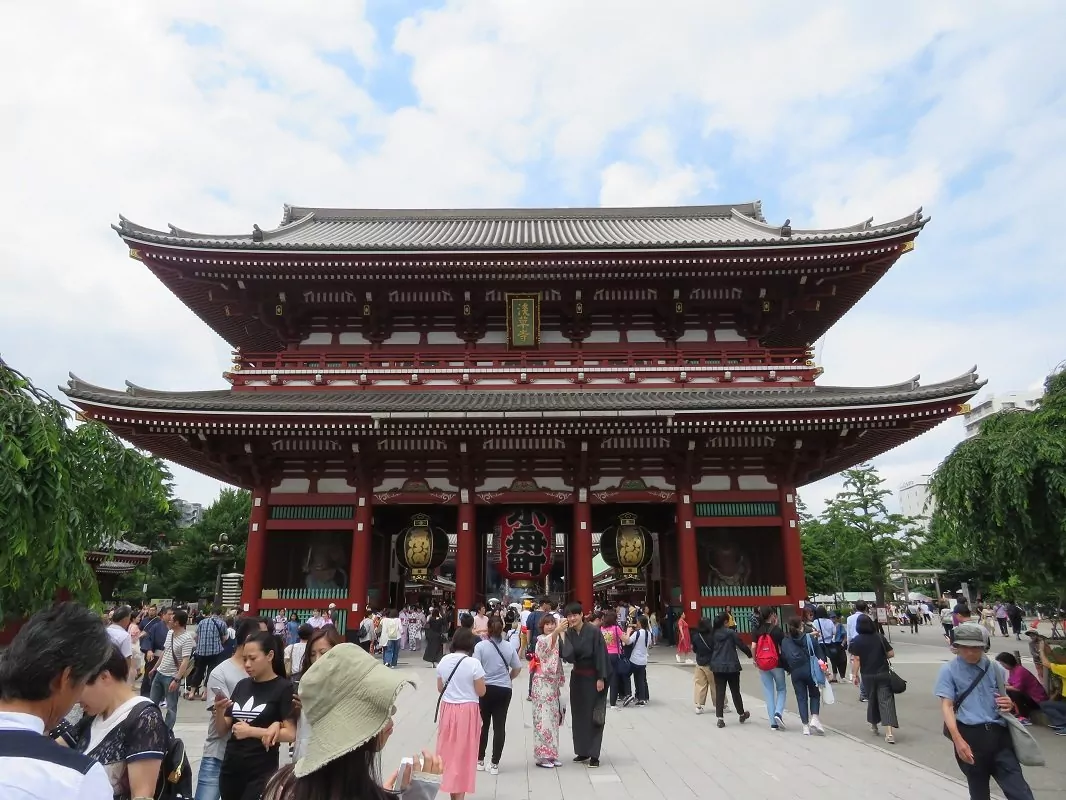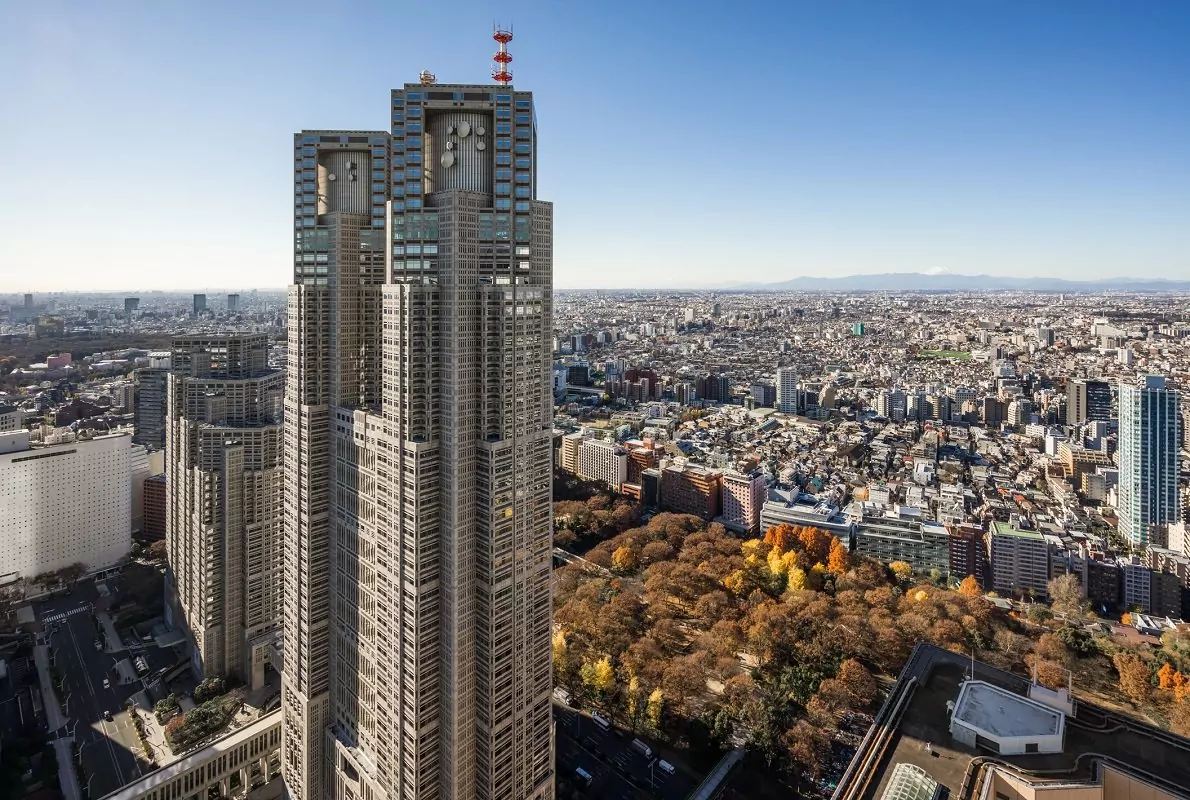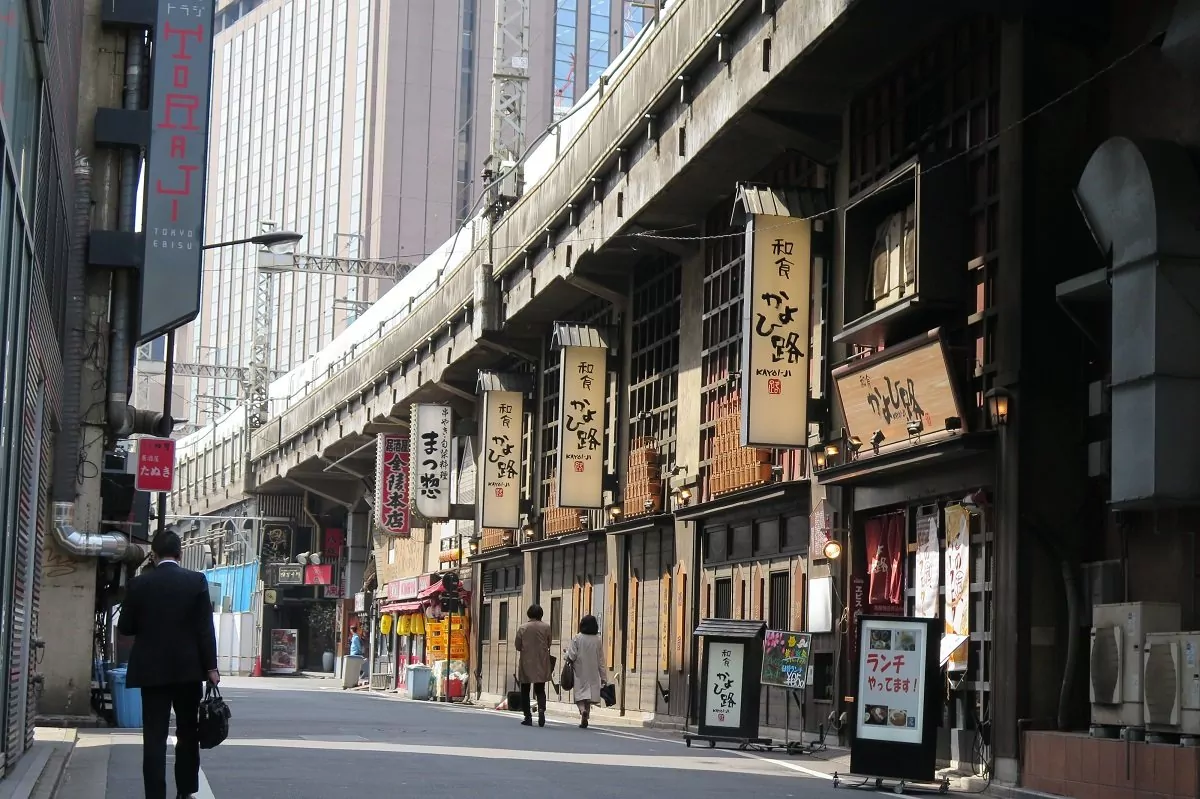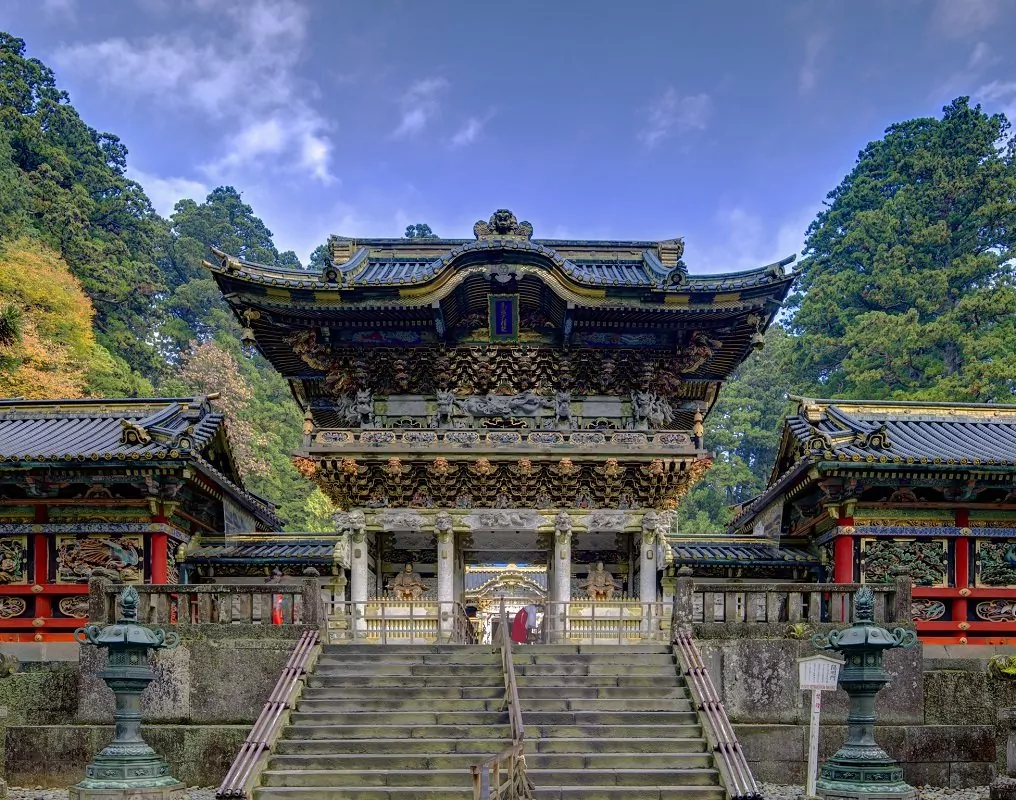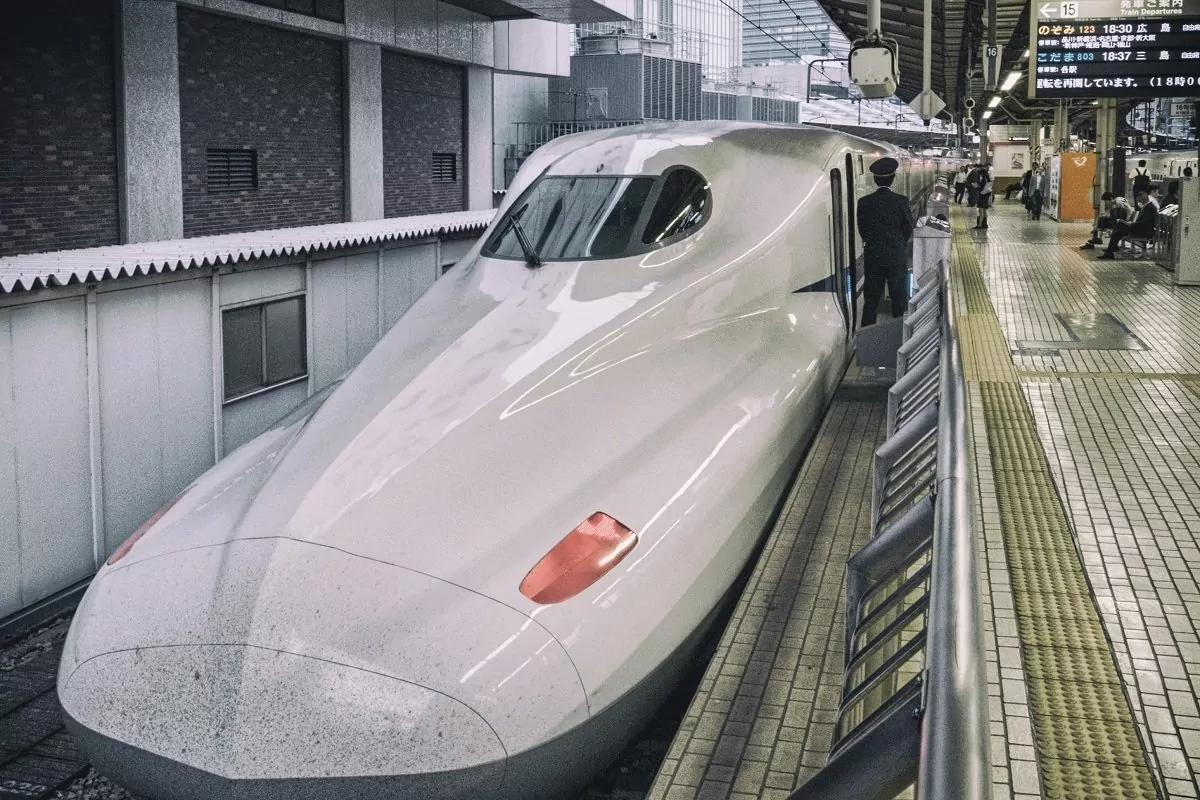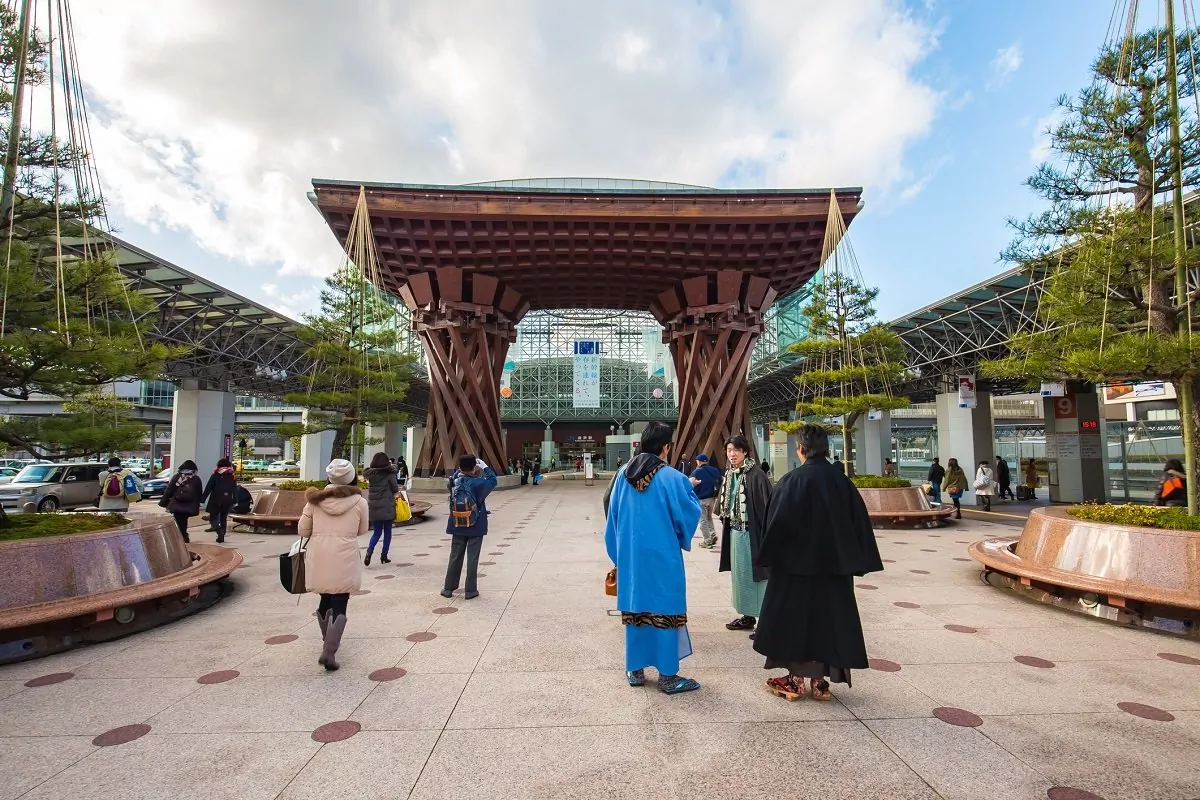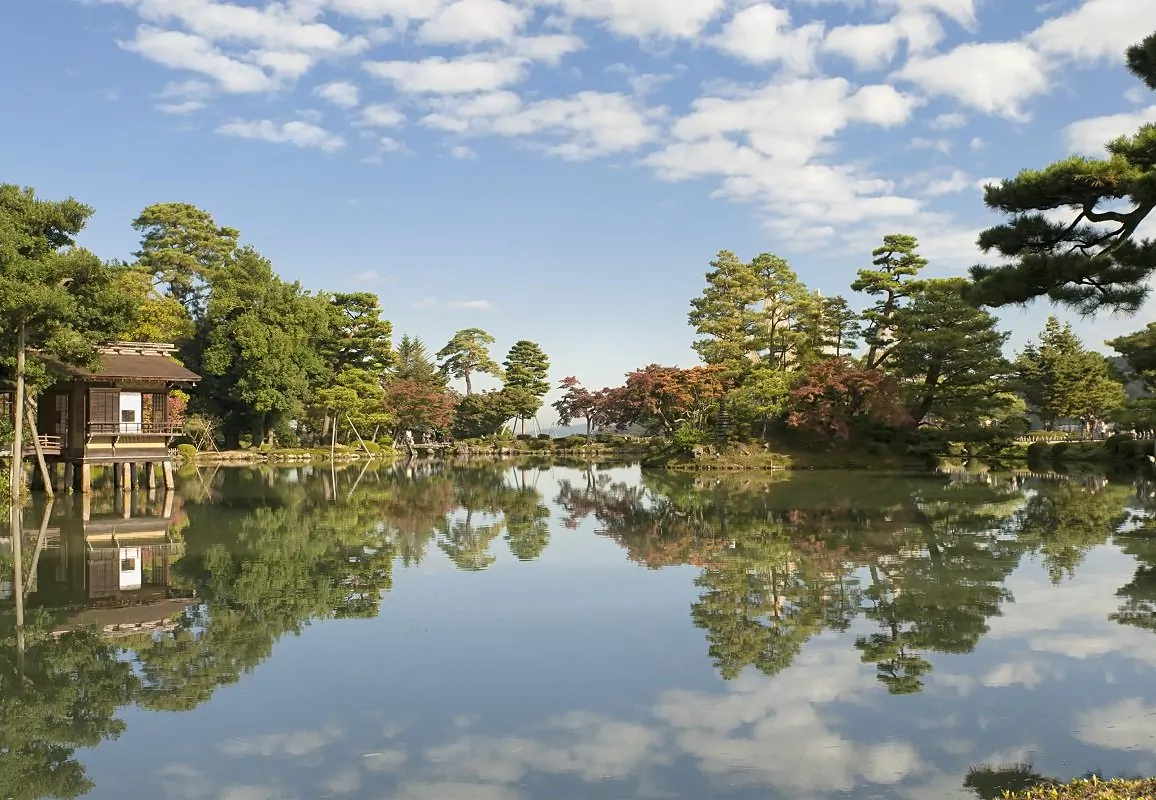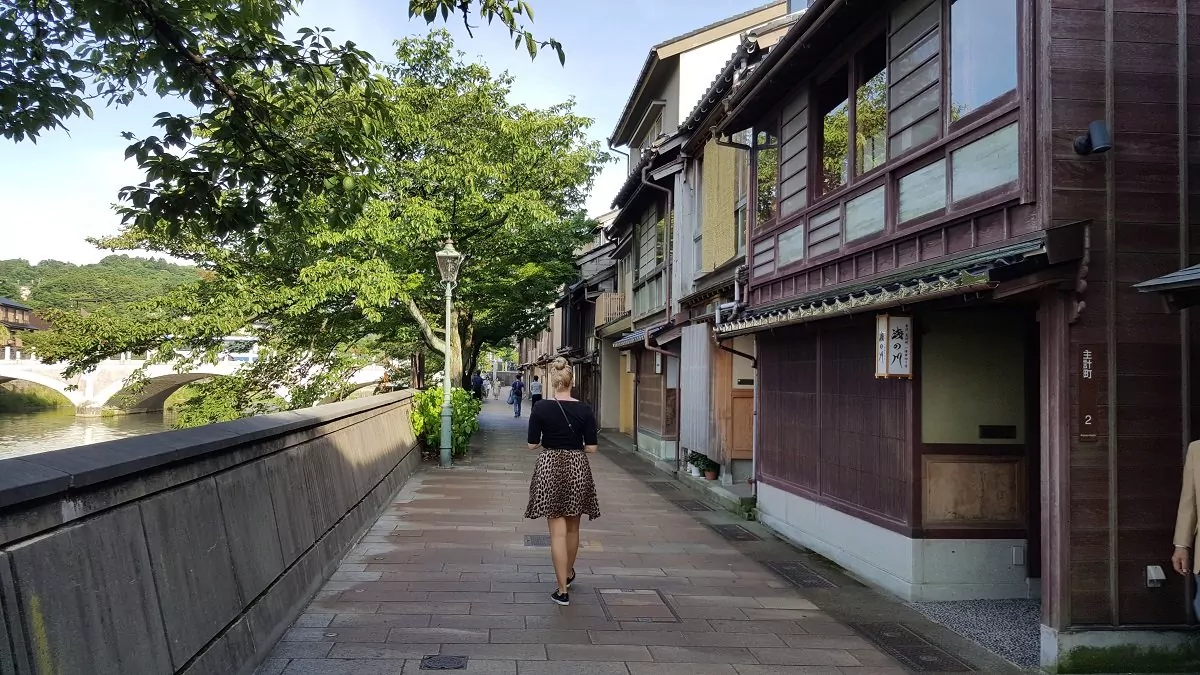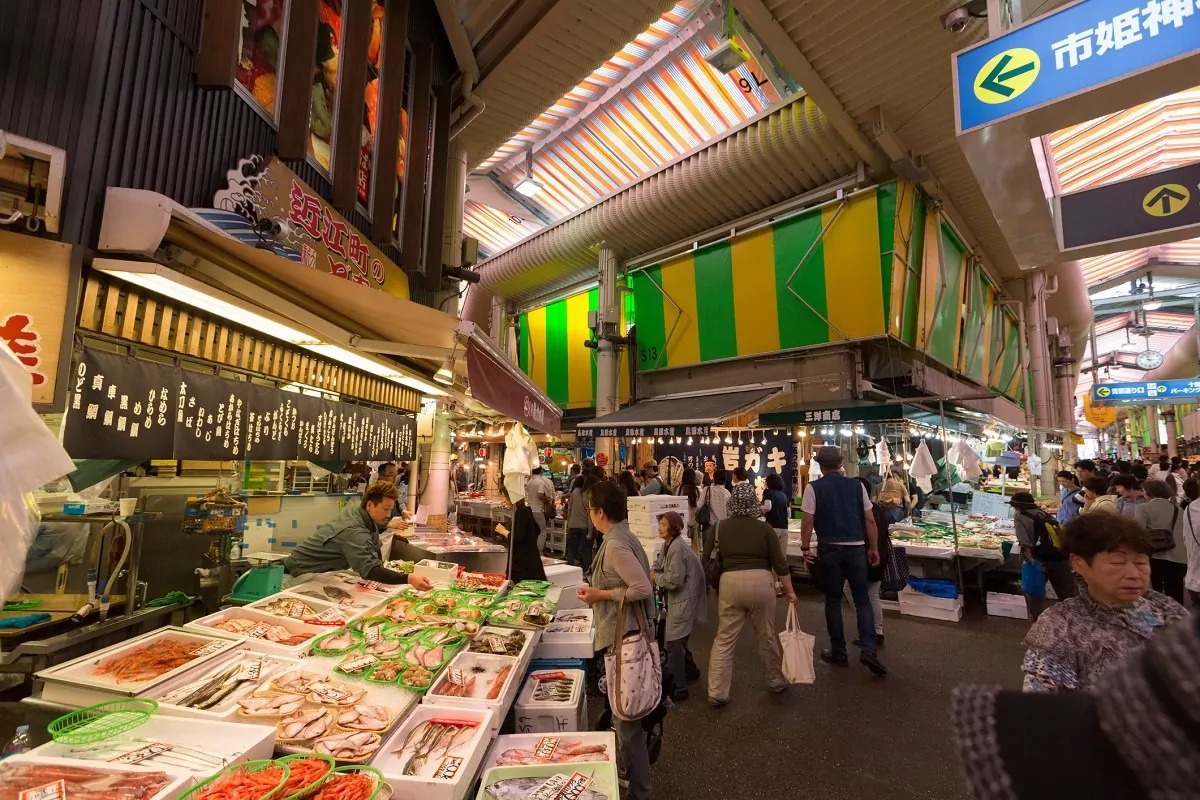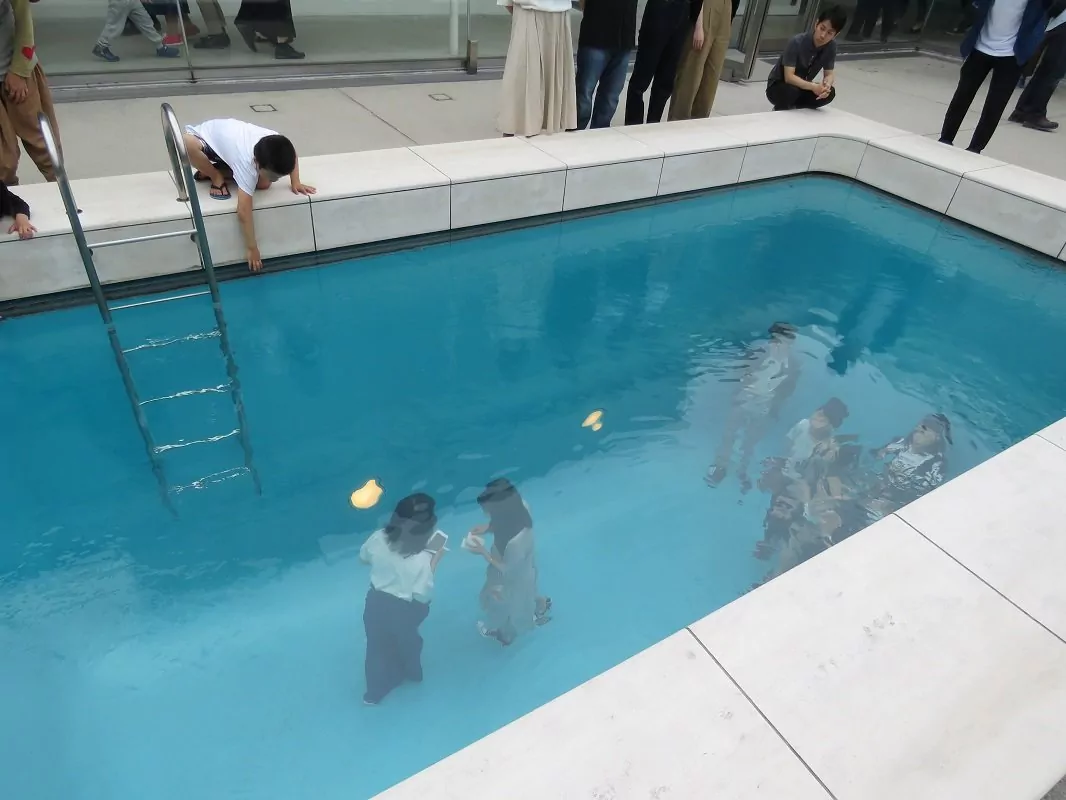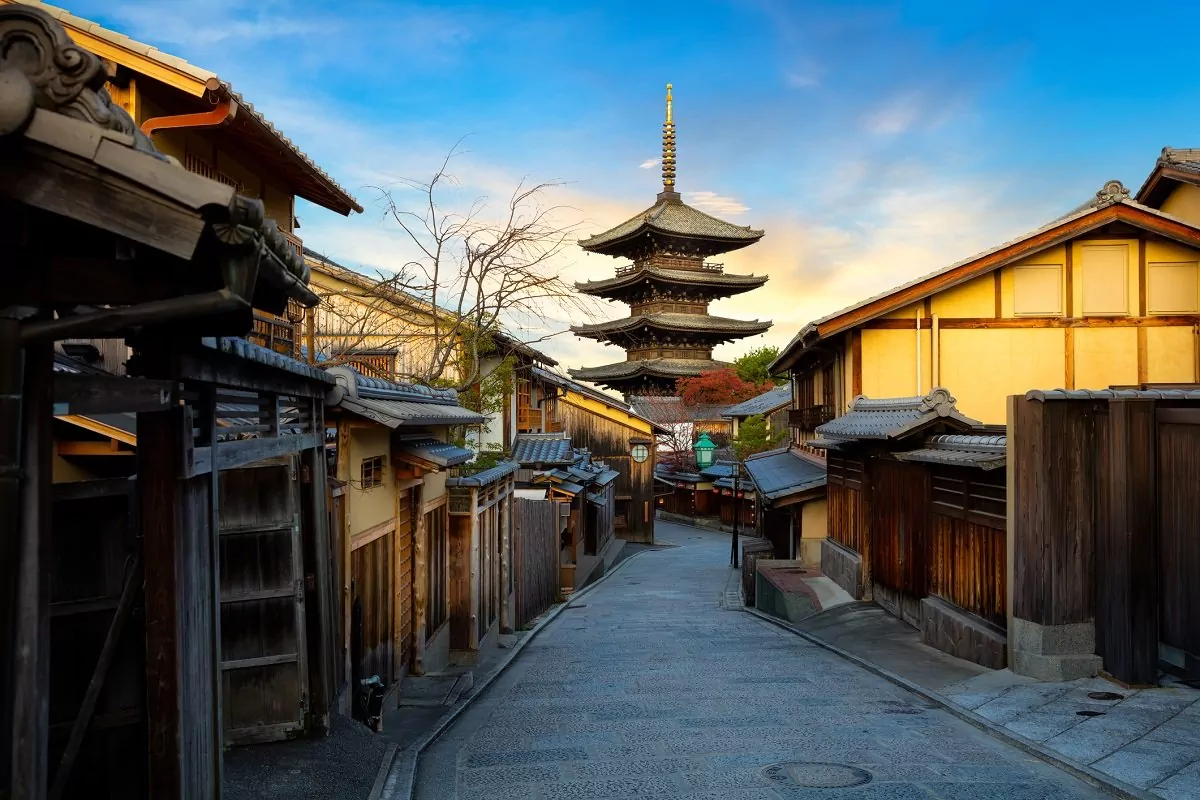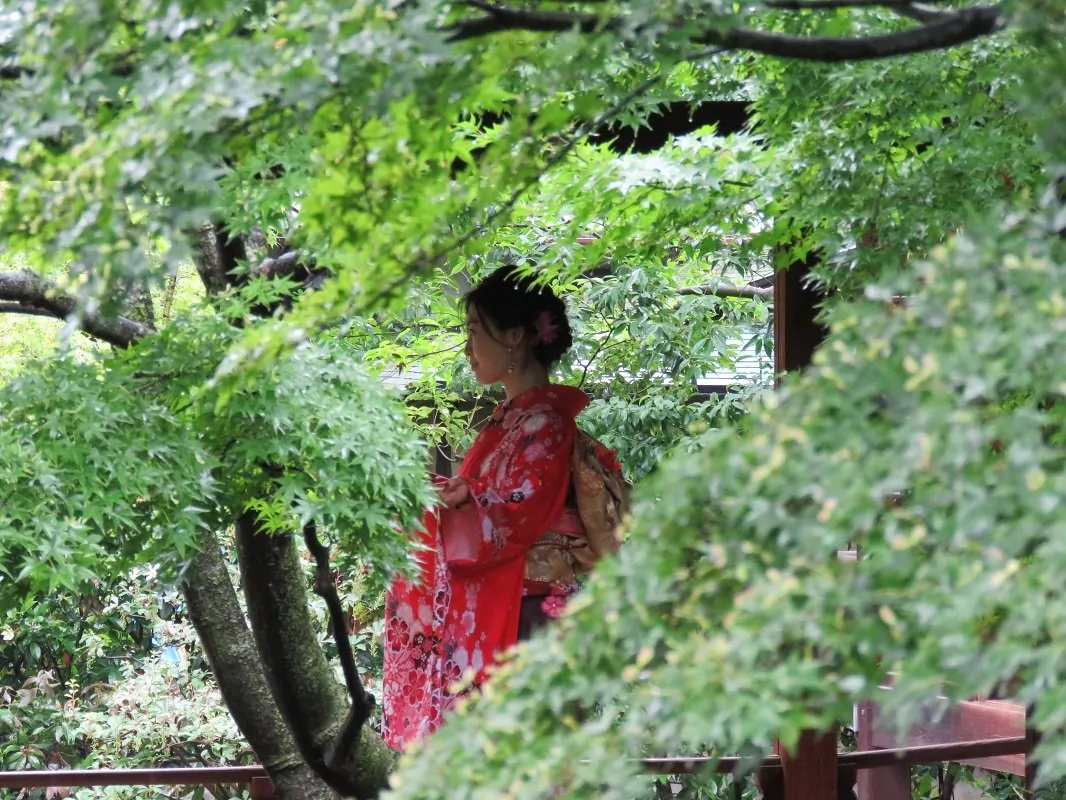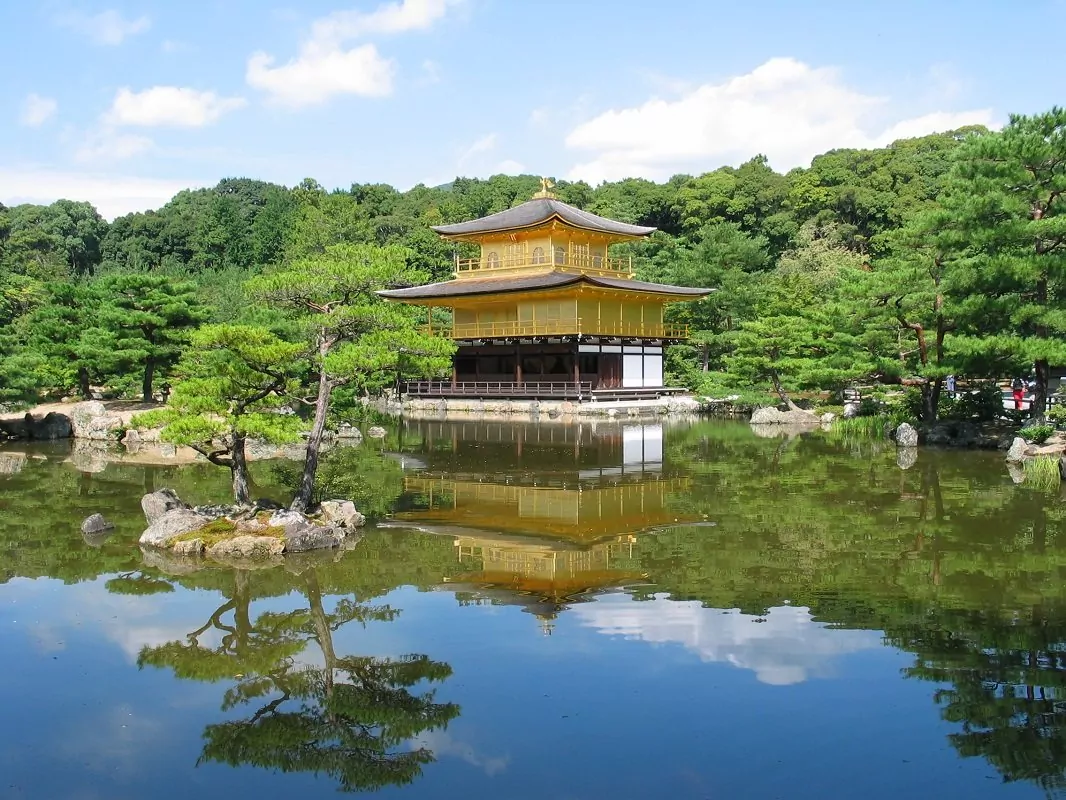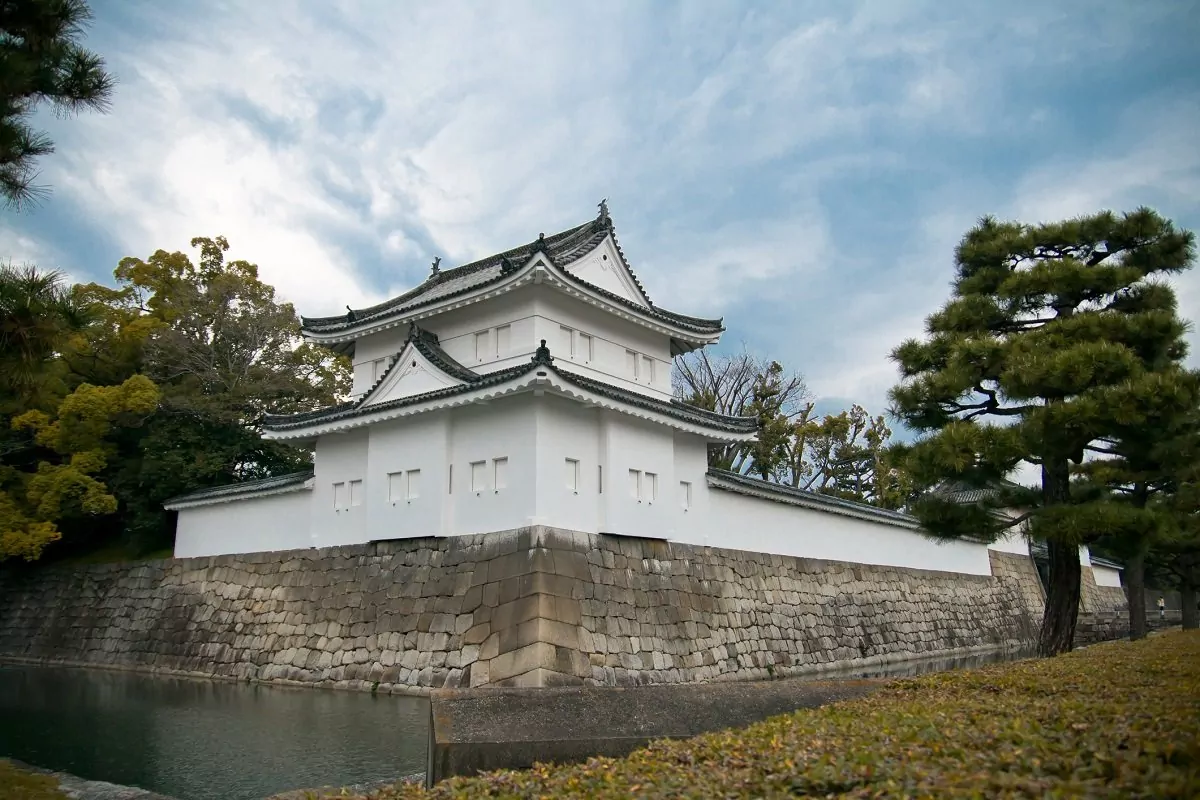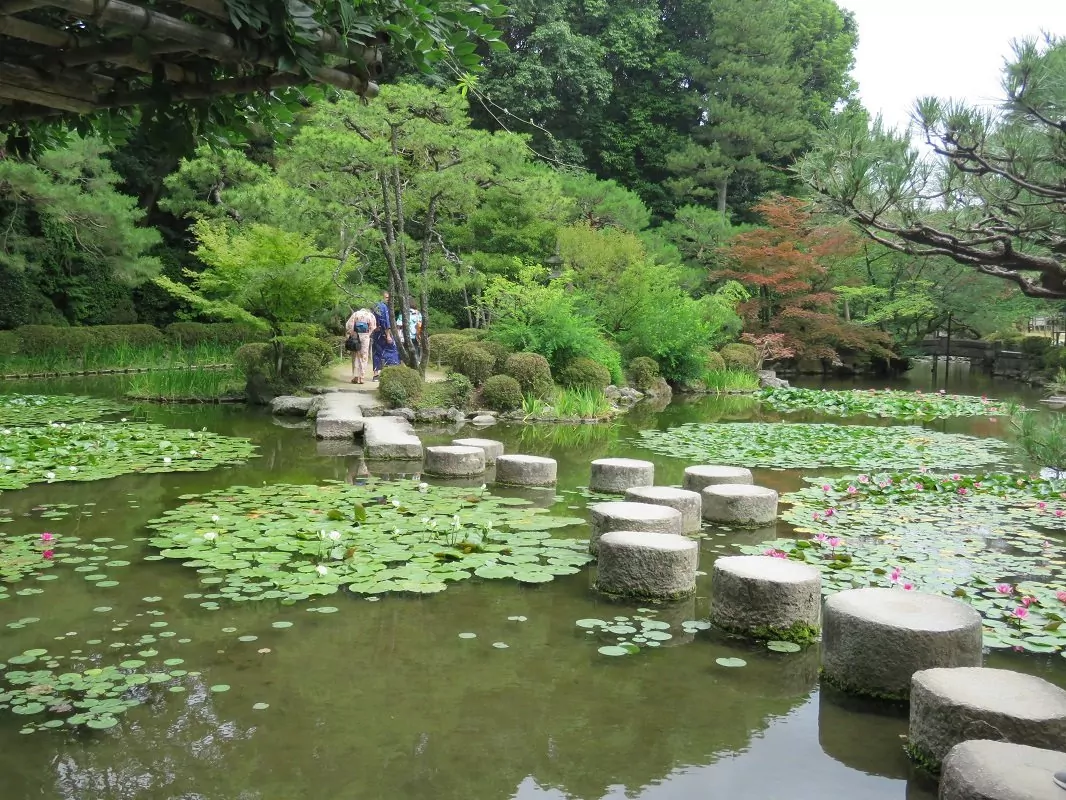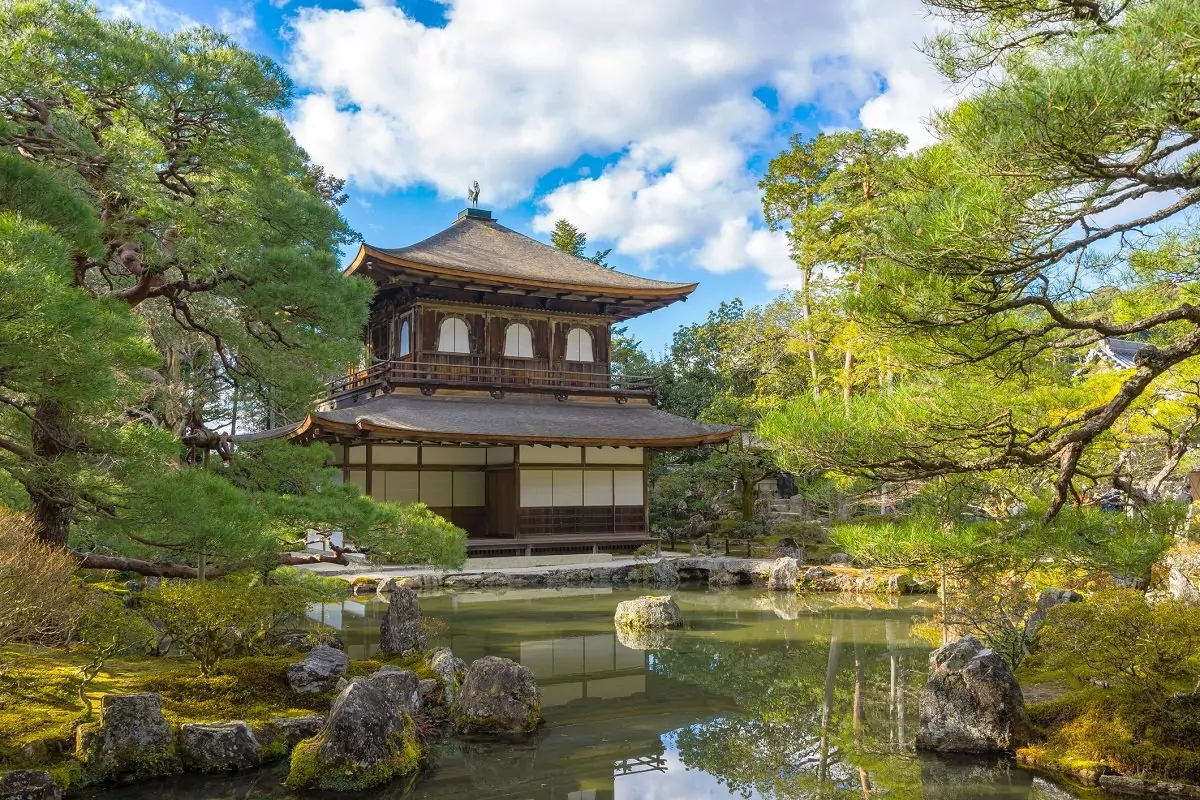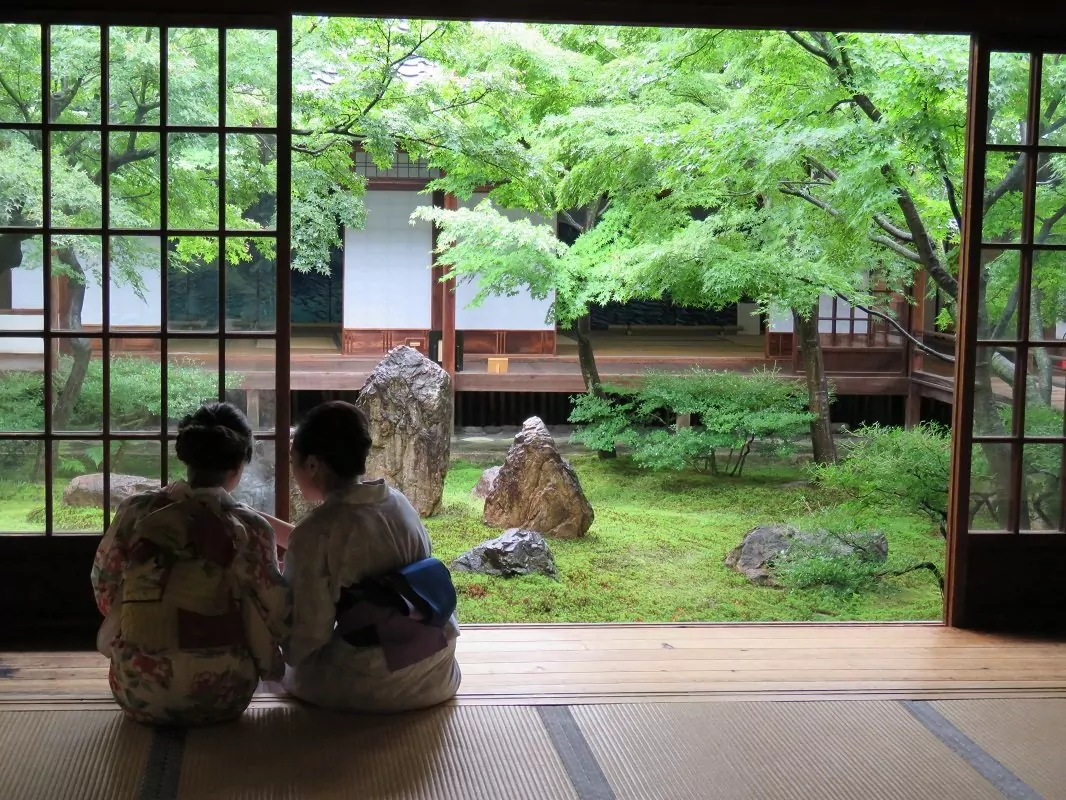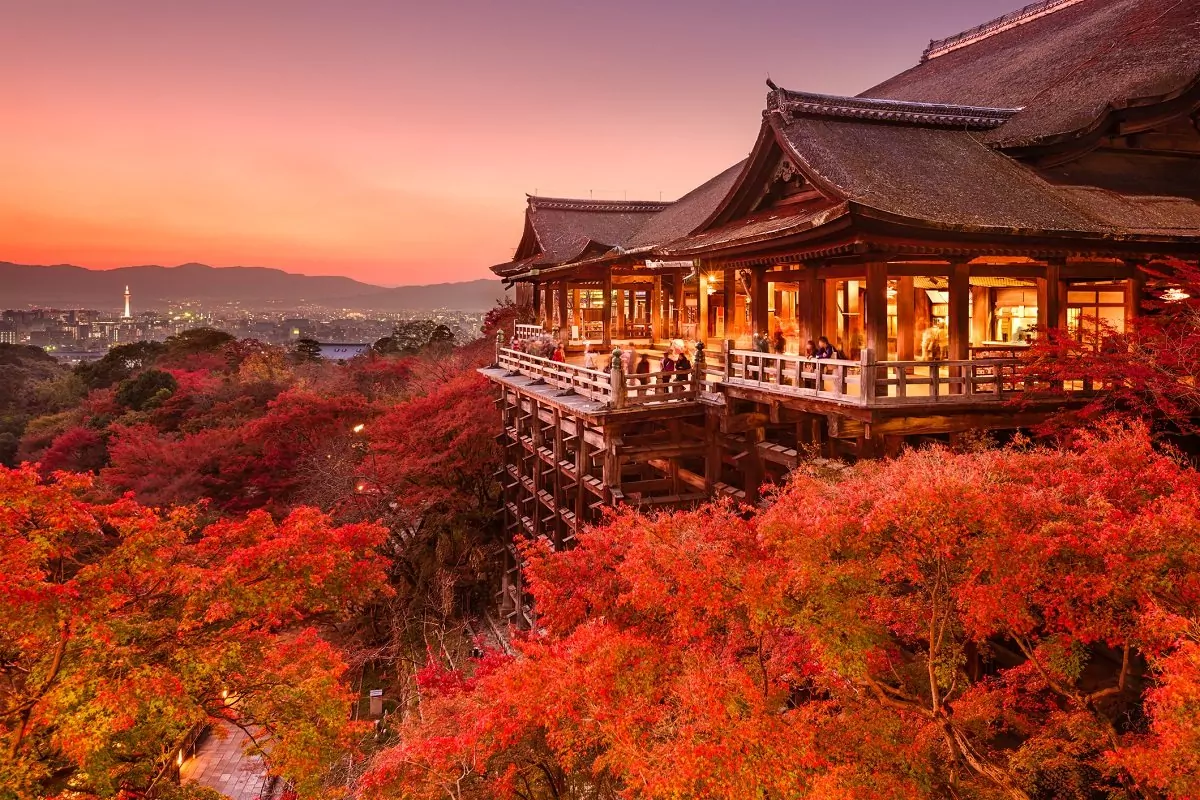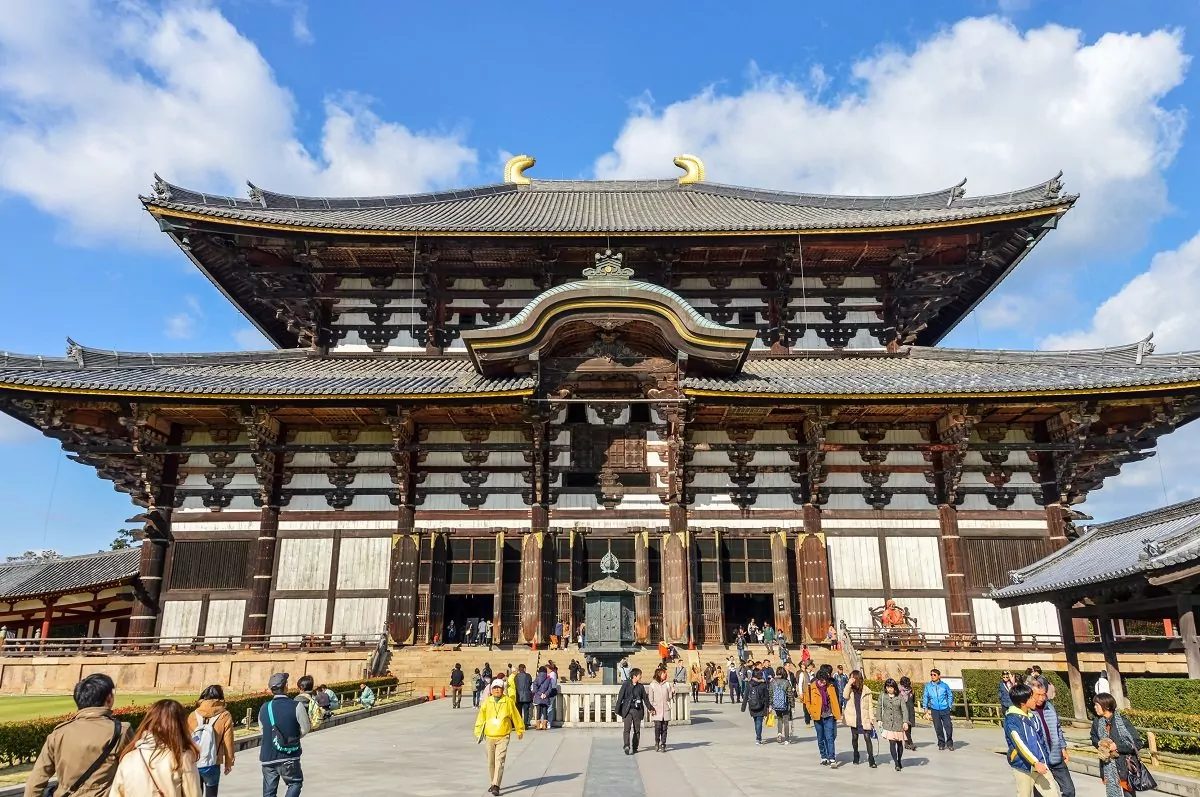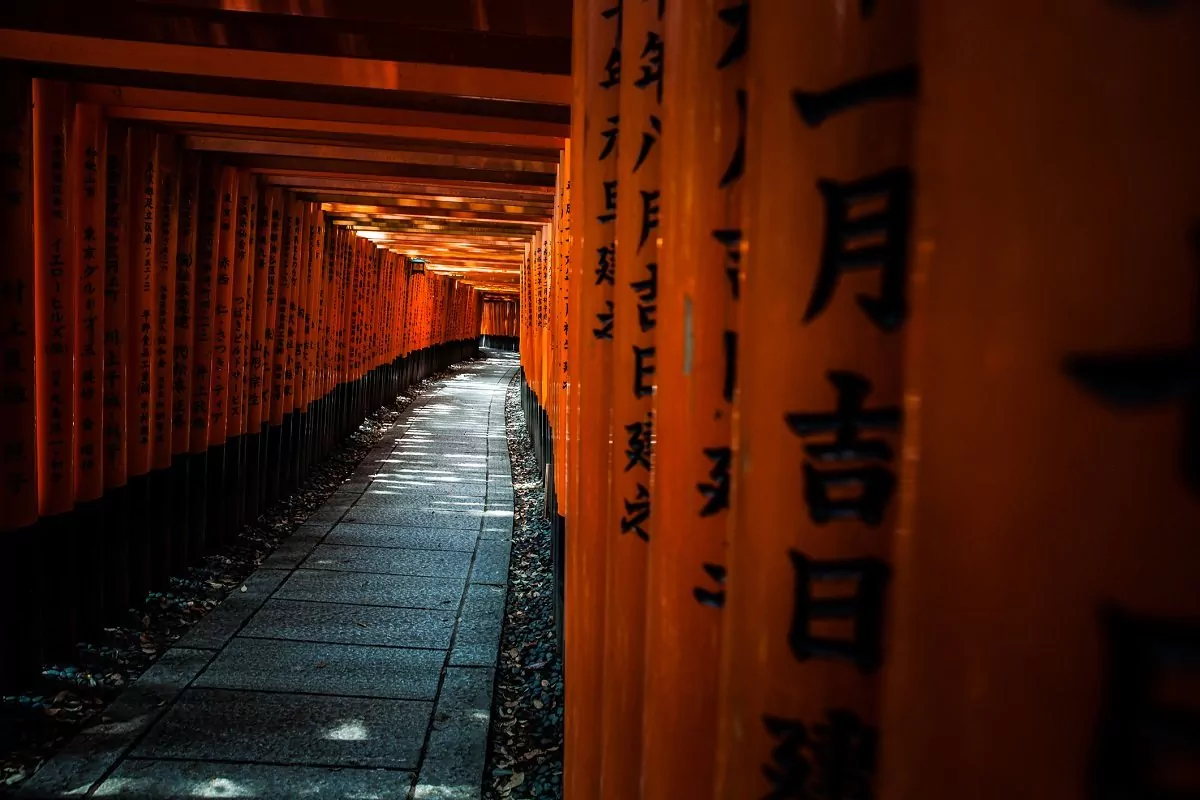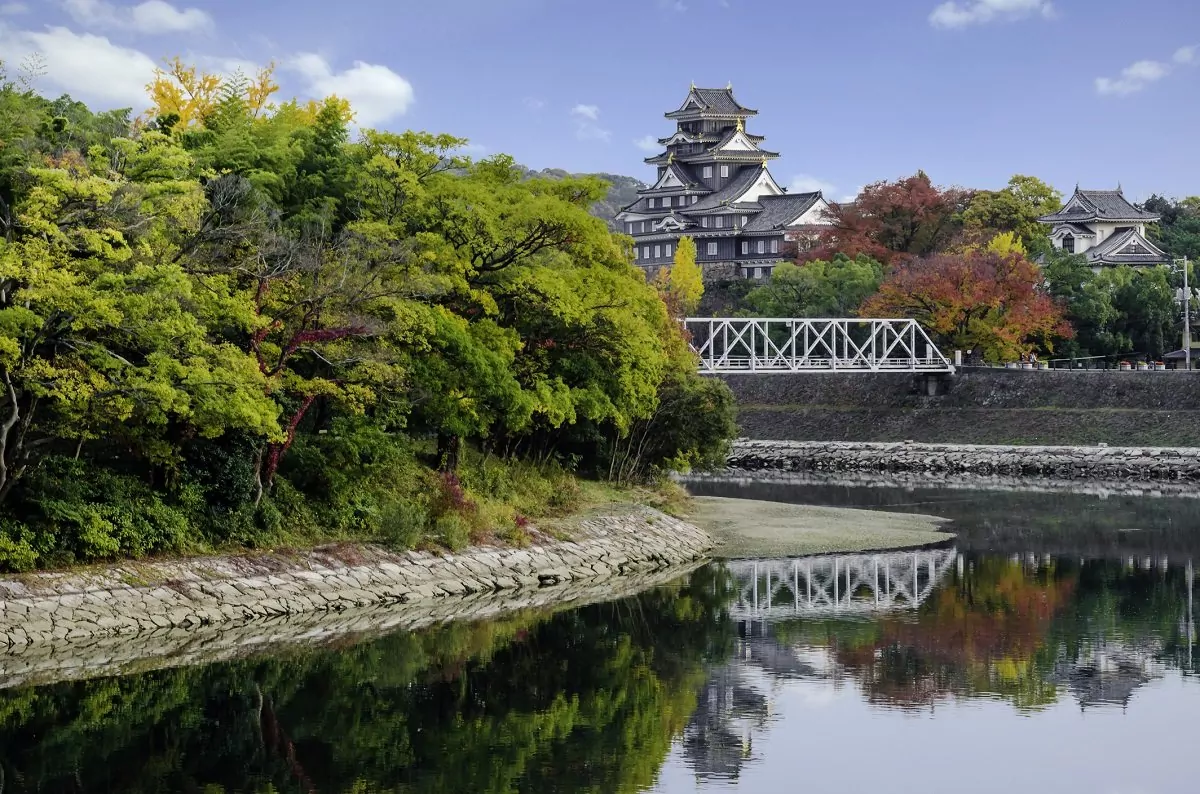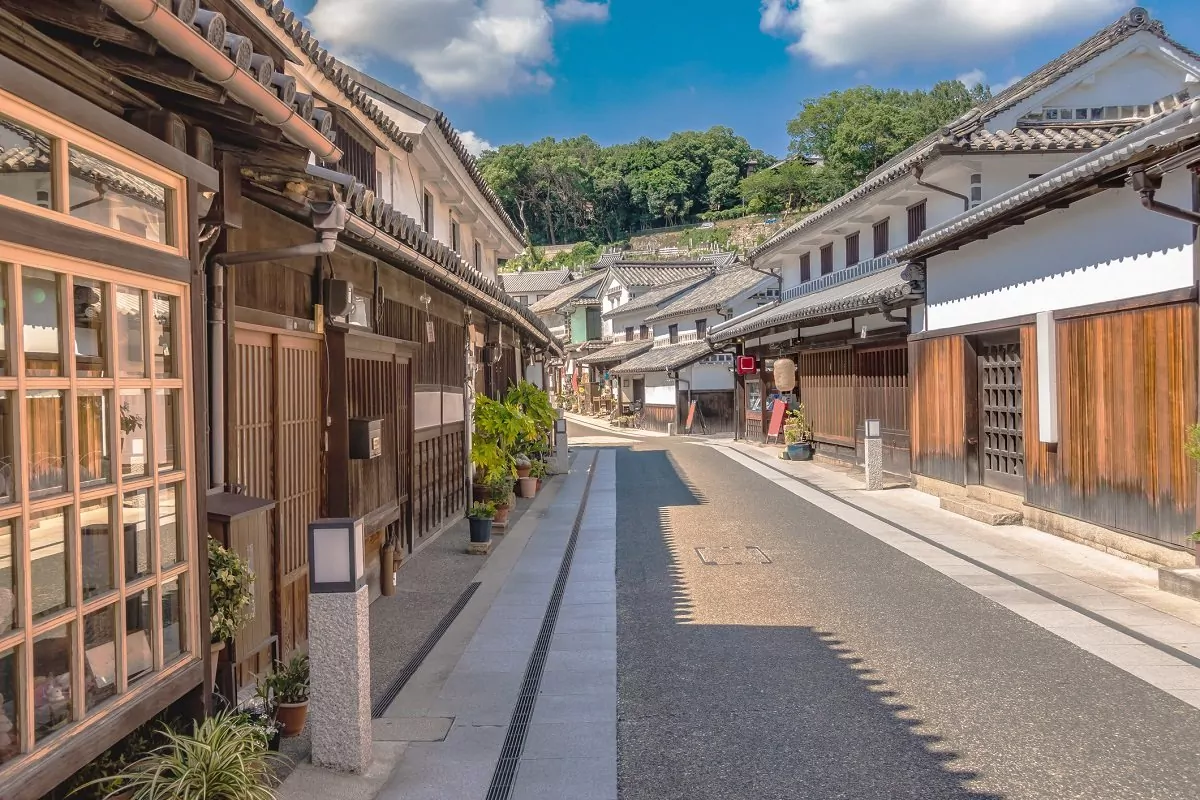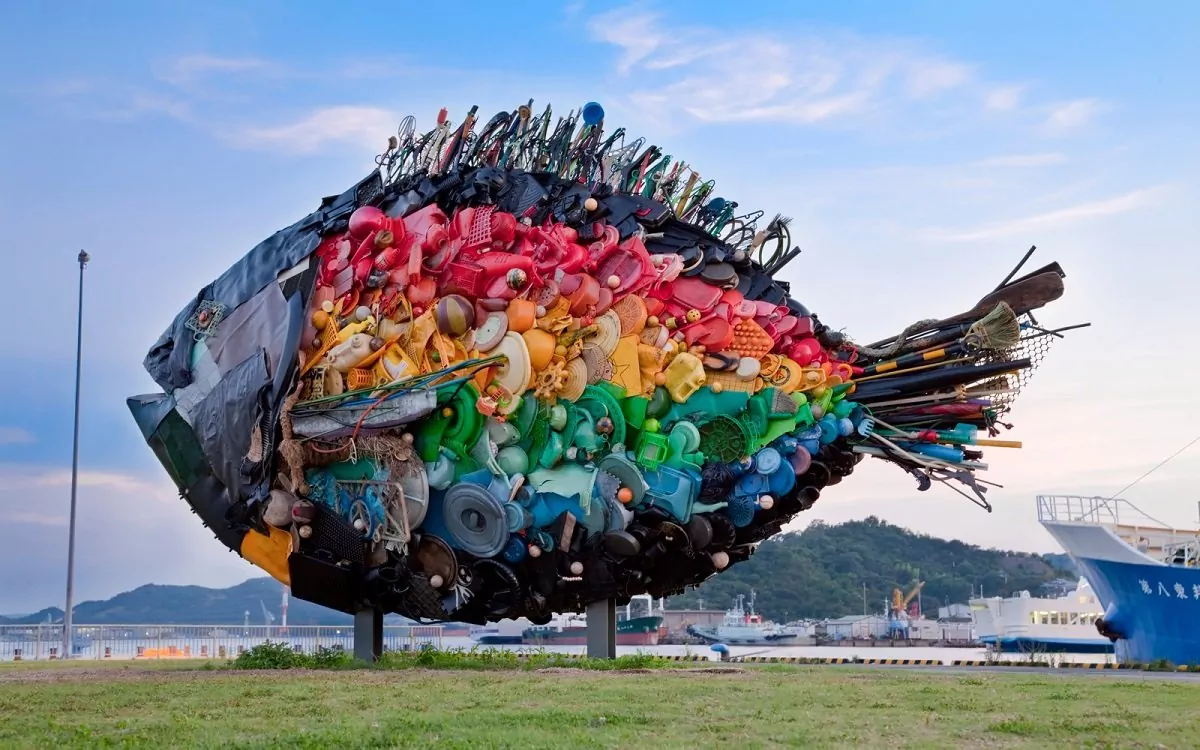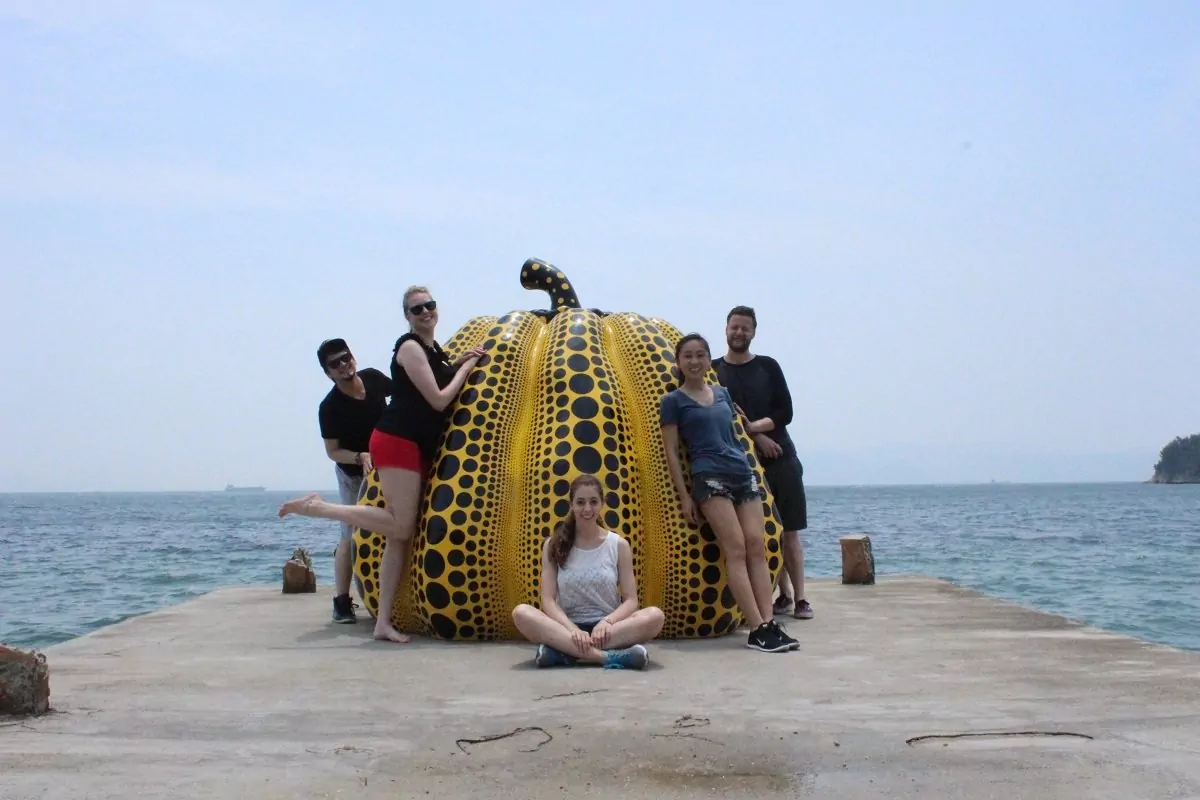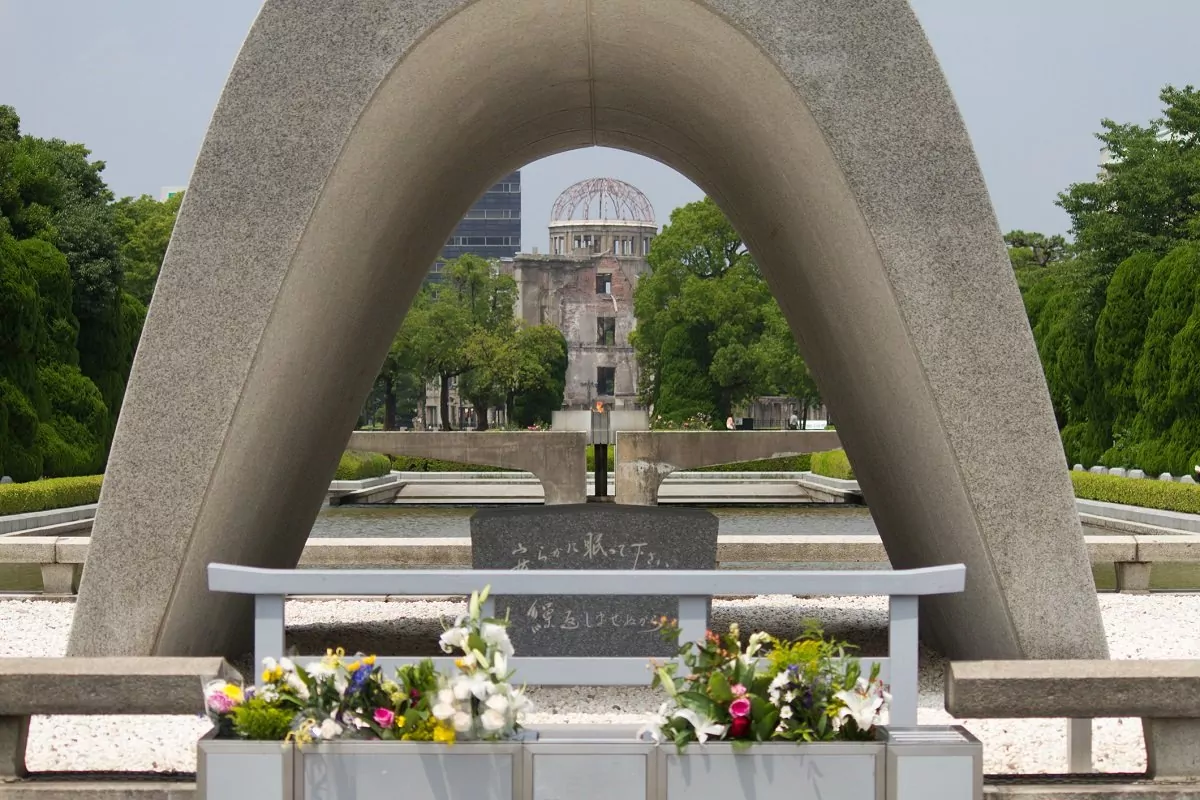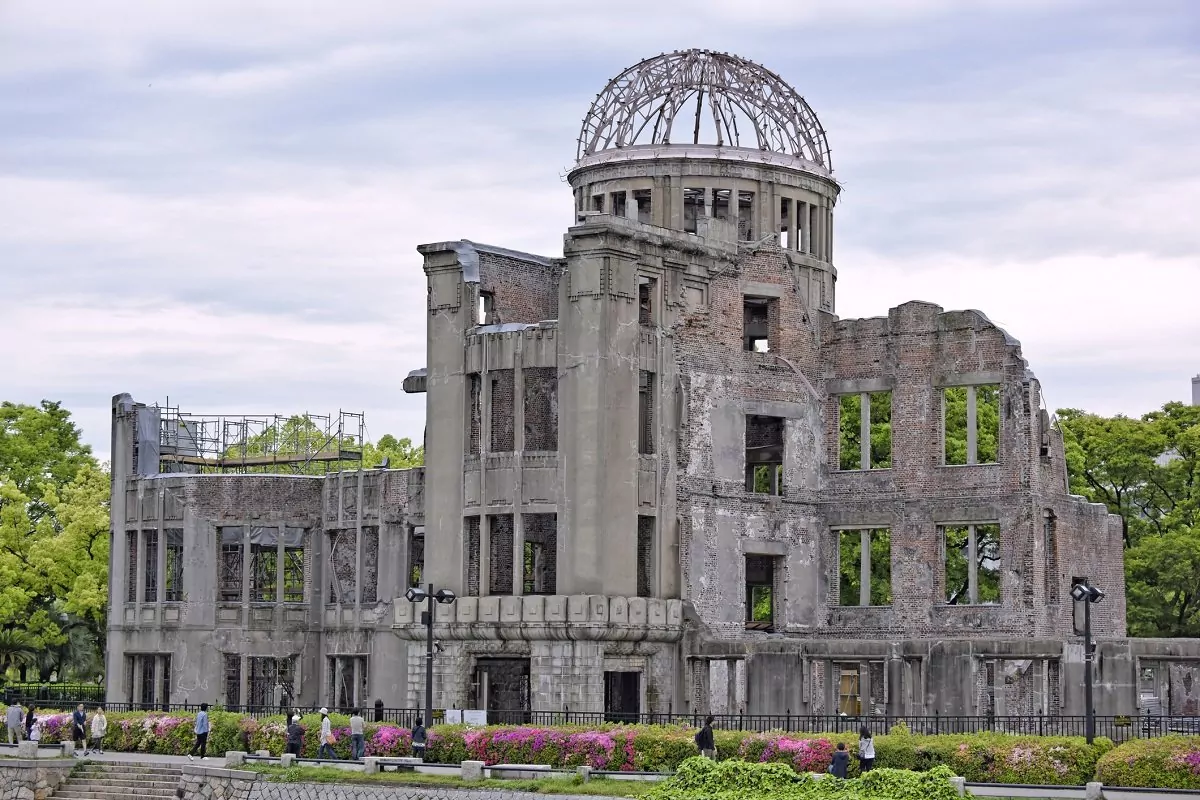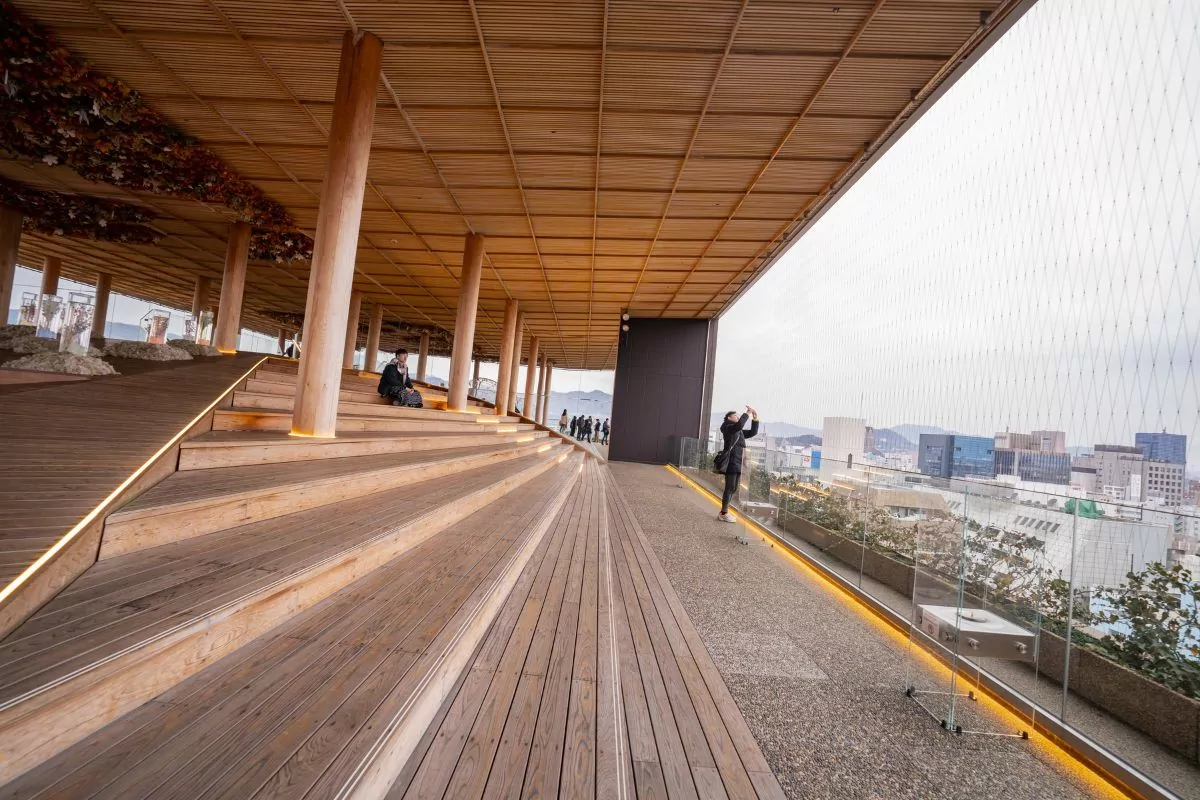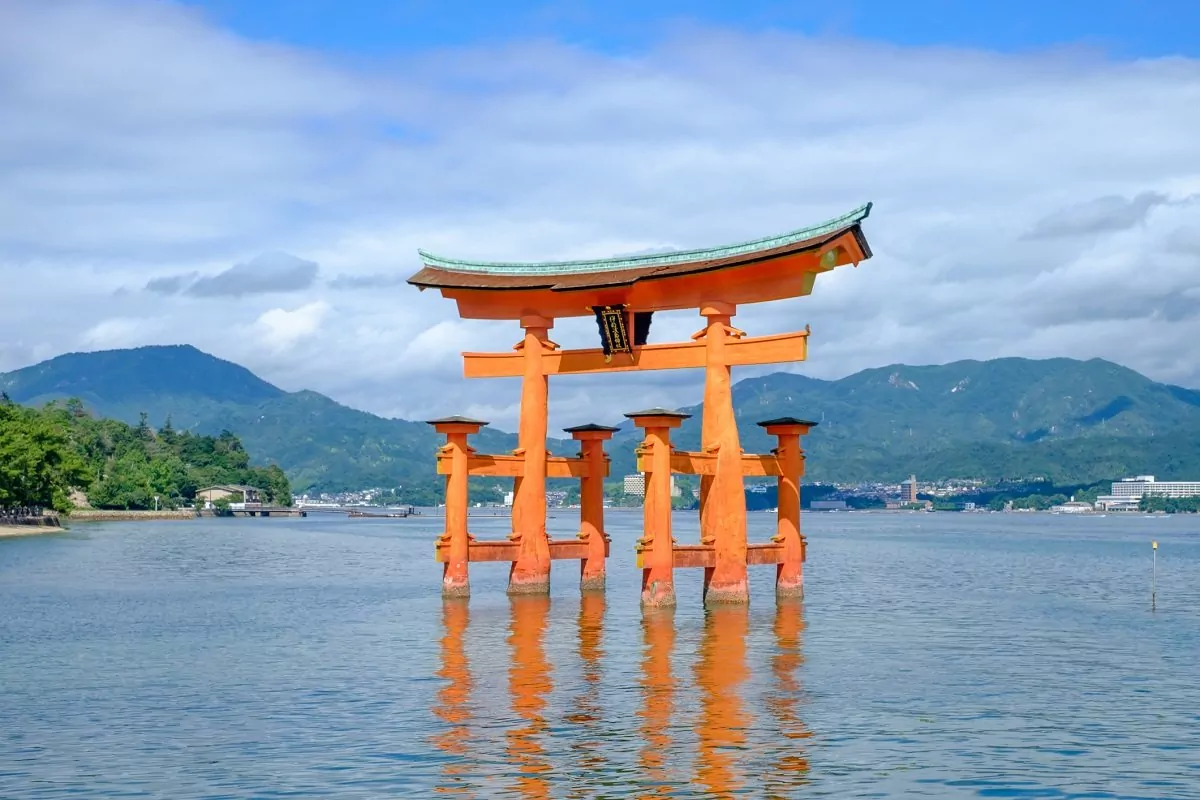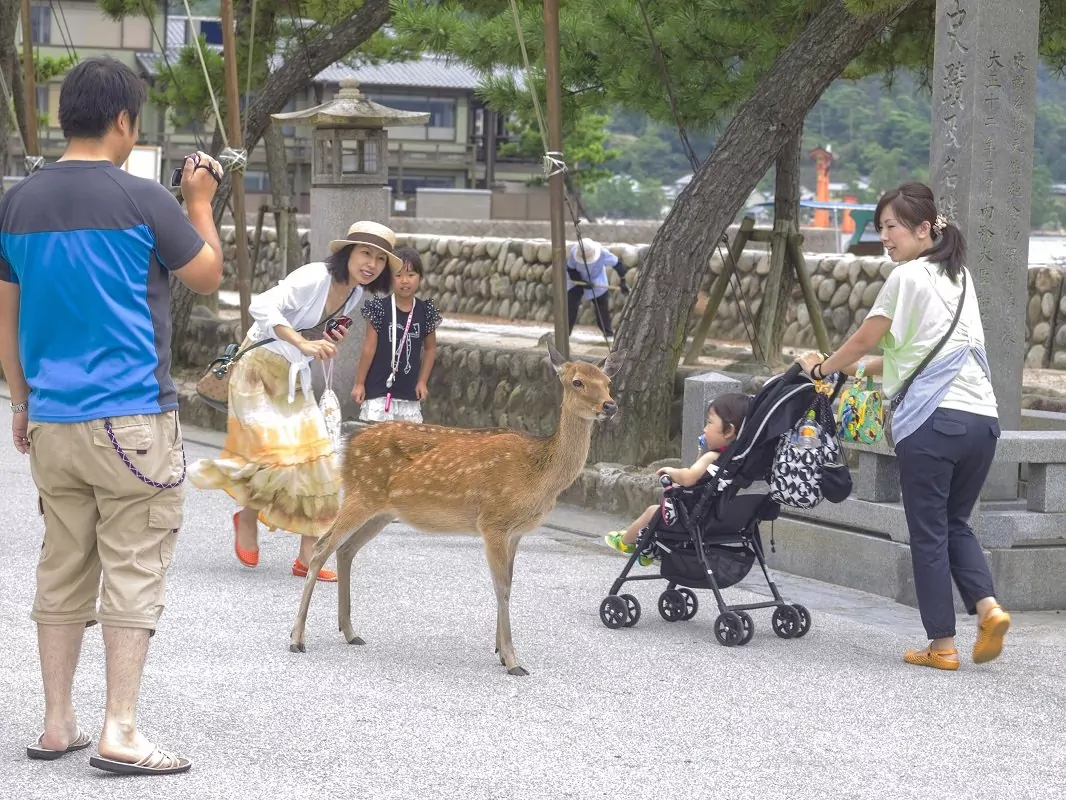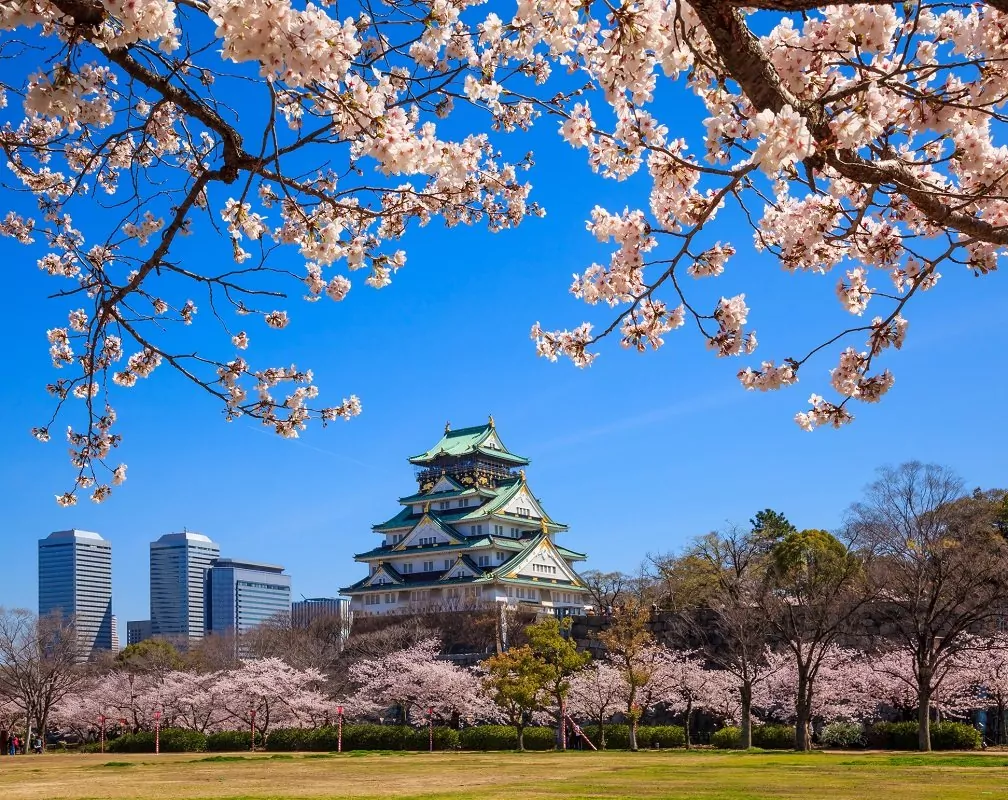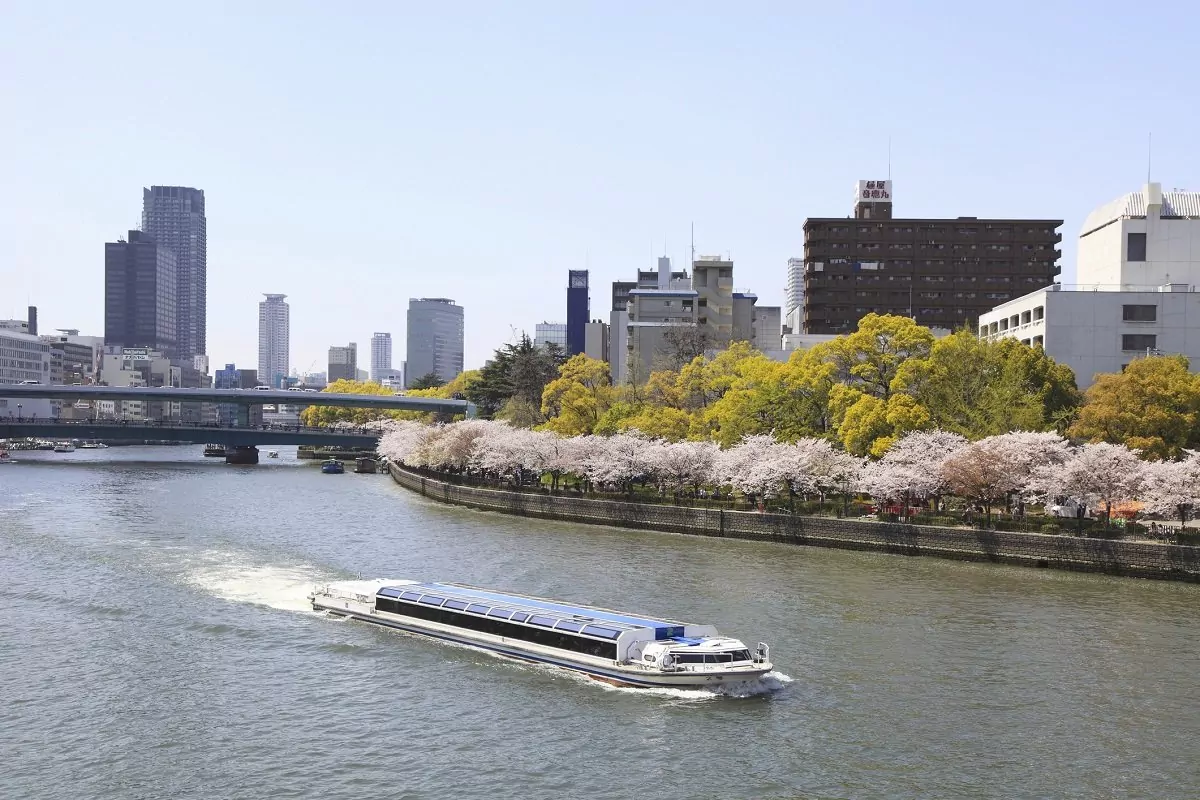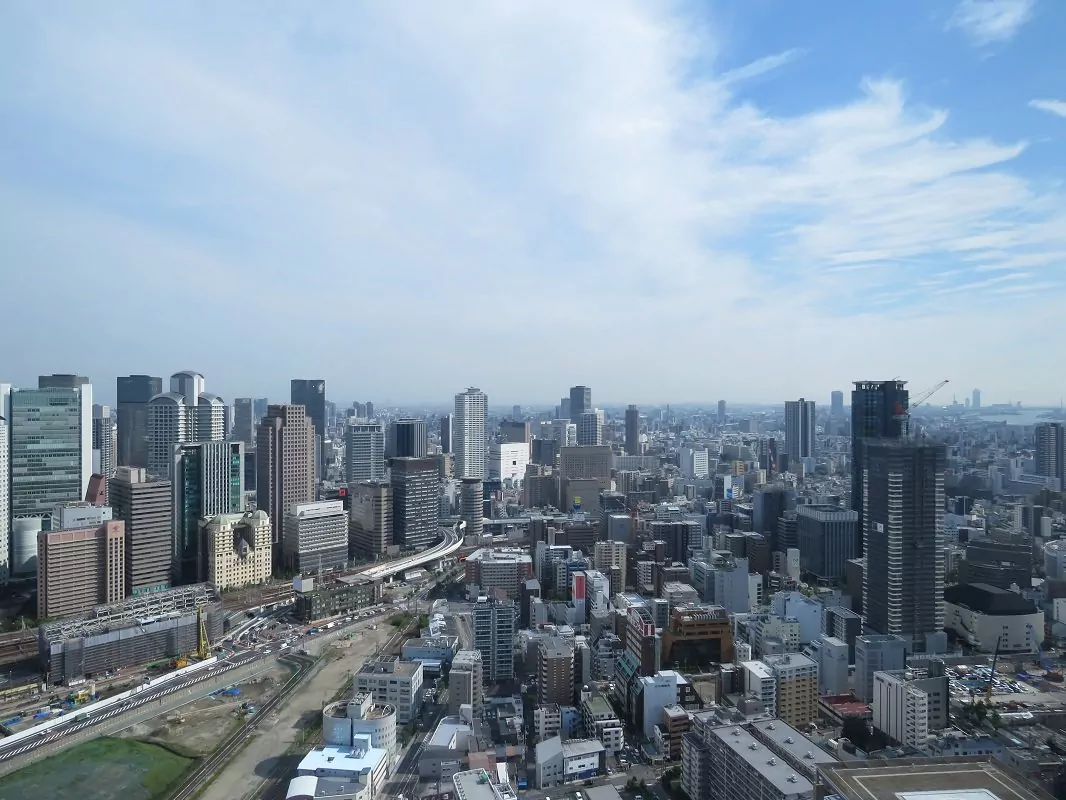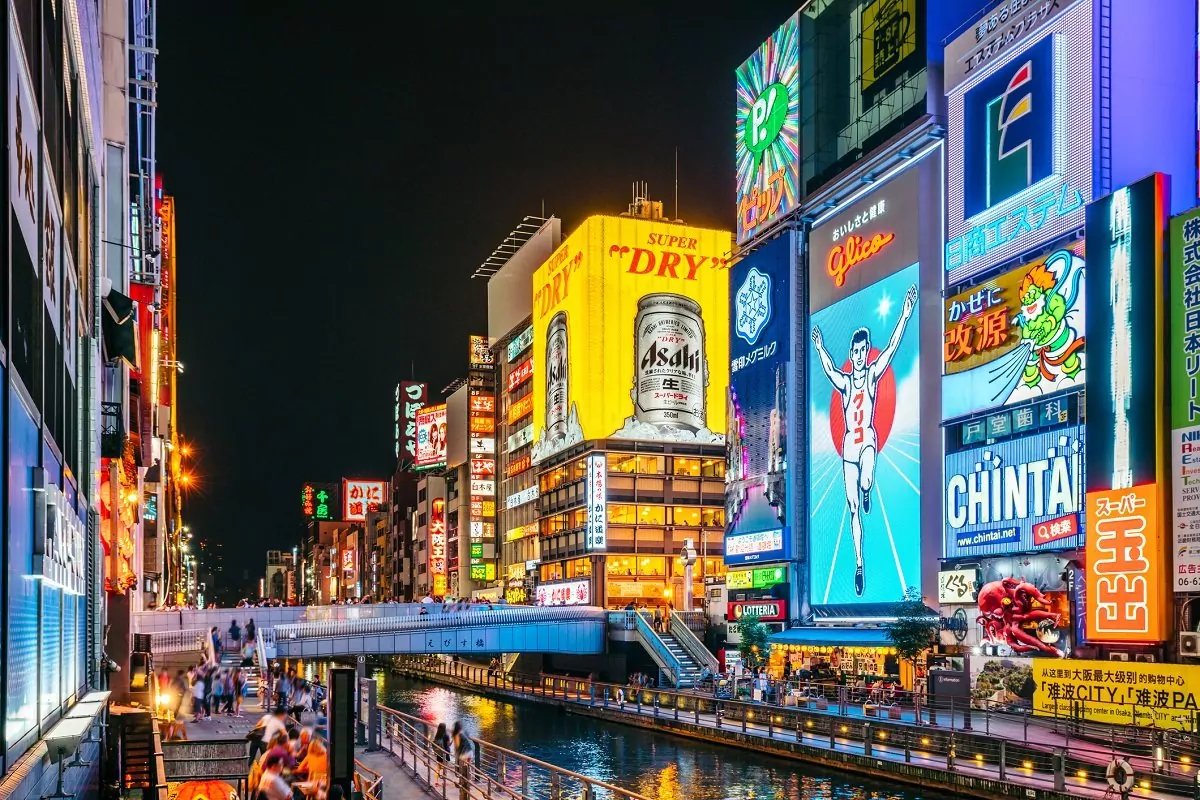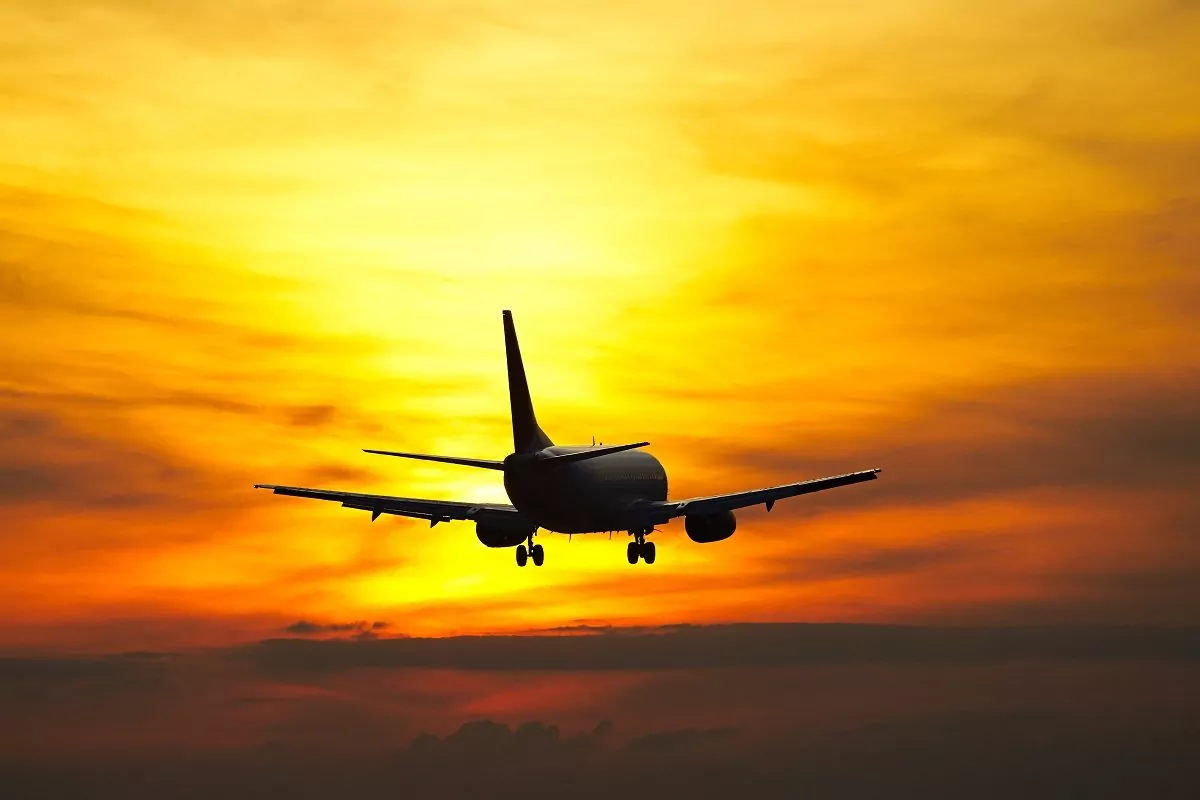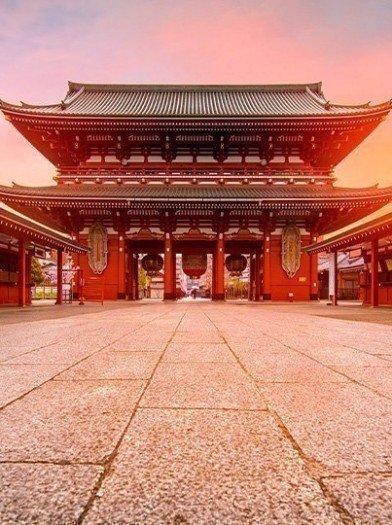Confidence Guarantee - Read more
18 days
The Best of Japan
You get Japan to your very core on this big tour. Experience famous highlights like Tokyo, Kyoto, Hiroshima, Kanazawa and Osaka spiced with less famous pearls like Okayama and Naoshima.
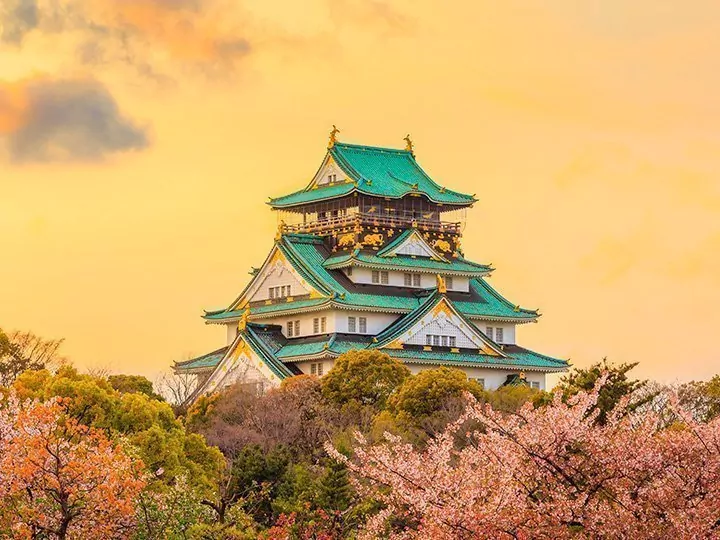
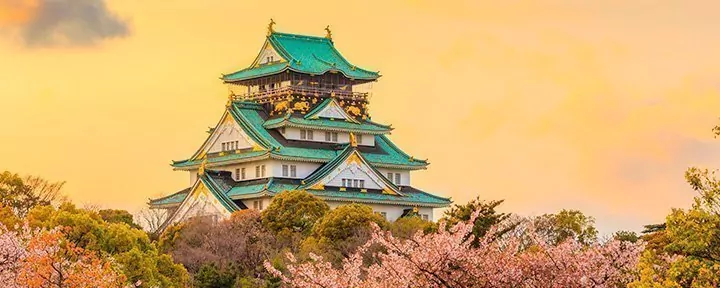
18 days
The Best of Japan
You get Japan to your very core on this big tour. Experience famous highlights like Tokyo, Kyoto, Hiroshima, Kanazawa and Osaka spiced with less famous pearls like Okayama and Naoshima.
What is included in the price?
This package includes the following
- Flight from the UK to Tokyo and home from Osaka
- Guide service on arrival at Tokyo, Kanazawa, Kyoto, Hiroshima and Osaka
- Transfer from the airport in Tokyo to the hotel
- Welcome meeting at the hotel in Tokyo
- Tokyo Pass for one day
- Kanazawa Loop bus ticket for one day
- Eco Card (train/bus/tram card) for one day in Osaka
- 14-day Japan Rail Pass, 2nd class with seat reservation
- 16 nights at tourist-grade hotels with breakfast
- Local English-speaking guides on all excursions
- All the transfers and excursions mentioned take place in international groups of 2–14 people, and with TourCompass’ own guests only
- Emergency hotline staffed 24/7 throughout your trip
- Departure guarantee – the price is valid when at least 2 people travelling. Please ask for a price if you are travelling alone
Comprehensive package of excursions:
- Guided full-day tour of Tokyo
- Guided half-day tour of Kanzawa including a visit to the Kenroku garden
- Guided full-day excursion to the artists’ island of Naoshima, including museum admission and ferry
- Guided half-day tour of the Hiroshima Peace Memorial Park and Orizuru Tower
- Guided half-day tour of Osaka including Osaka Castle and a one-hour walking tour
THE TOUR IN SHORT
In our “The best of Japan” tour, we offer you the most famous sights and some hidden gems. Your route from Tokyo to Kanazawa, Kyoto, Okayama, Hiroshima and Osaka, will over the course of 18 days offer you a near-complete glimpse into the culture, history and modern day of Japan. You will experience skyscrapers, modern architecture, old cultural towns, gorgeous wooden castles, living geisha districts, the Hiroshima Peace Park and the Atom Bomb Dome, as well as a look at some Japanese Zen gardens.
You travel by high-speed trains or bullet trains from city to city, as this is the most efficient way to get around. Trains and stations in Japan are an experience all to themselves; everything works like clockwork, and delays are unheard of.
Food in Japan is excellent. The Japanese eat plenty of vegetables and prefer fish and shellfish to meat and poultry, and this is reflected in their menus as well. In the bigger cities, there are of course a wealth of international restaurants to choose from too.
No matter which part ends up being your own highlight, the tour is quite simply an incredible experience in one of the greatest cultures of the East.
Why choose this tour
- The big Japan tour including Tokyo, Kyoto, Hiroshima, Kanazawa, Osaka and trips with the iconic high-speed train Shinkansen, which is an experience all on its own
- You get a real feel for Japan in your encounter with the beautiful ancient cultural cities with their unique temples and shrines, the vibrant geisha districts and modern architecture
- Enjoy one of Japan’s most gorgeous parks: Korakuen, the black “Crow Fortress” in Okayama, and a full-day trip to the pleasant island of Naoshima, known for its architecture, sculptures and art
- You get more time in Tokyo and Kyoto to either go on extra excursions or explore the cities on your own
Our prices always include
- All international and domestic flights
- All destination transfers
- All specified excursions and activities
- All accommodations
Detailed Itinerary
Day 1:
Flight from the UK
Departure from selected airport in the UK. There may be connecting flights on the way.
Day 2:
Arrival in Tokyo
Your driver will be waiting for you out in the arrivals hall, holding up a TourCompass sign with your name on it. The driver will drive you to your hotel in Tokyo. On your arrival at the hotel, you’ll receive a welcome pack containing your Japan Rail Pass voucher, your Tokyo Pass, Kanazawa Loop bus ticket and Eco Card to Osaka.
After check-in at the hotel, the day is yours to enjoy Tokyo.
Tokyo is hectic beyond belief. Futuristic architecture, skyscrapers and neon lights flashing in every colour imaginable. And there are people everywhere. You’d think that all the crowds would lead to pure chaos, but like most things in Japan, the traffic (pedestrians included) moves quite smoothly. Everything and everyone have their place, and everything is unbelievably efficient – once you get the hang of it.
Day 3:
City round trip in Tokyo
At 9 am today, you’ll meet your guide in the lobby, where a welcome meeting will be held. At the meeting, the guide will run through the itinerary of the next few days, fill you in on some practical things and answer any questions you may have.
An exciting tour of Tokyo then awaits you, which will give you a good overview of a few of Tokyo’s different districts.
The tour starts in Asakusa. Asakusa was once Tokyo’s biggest entertainment district. This is where the geisha lived, side by side with gangsters and pickpockets. The whole area was destroyed during World War 2 and has been rebuilt at a smaller scale, and most of the geisha are here for the tourists’ sake. But you can still experience its history today, as you walk through these streets. The contrast can be felt quite clearly, just as it can be felt all over Japan – the contrast between the old and the ultra-modern.
Asakusa is also where you can find the oldest temple in Japan, Sensoji Temple. Sensoji is the oldest temple in Tokyo, and for many Japanese people, coming here to light incense is of profound importance. Nakamise street leads up to Sensoji Temple. Nakamise consists of souvenir shops and food stalls, and the street offers great opportunities to buy traditional souvenirs.
The tour of Asakusa finishes up at Kappabashi Kitchen Street, which can offer you everything in kitchenware. Perhaps you can find yourself a useful souvenir in the form of a new kitchen implement?
After lunch, you will visit Shibuya. You probably already know Shibuya – at least from photographs. This is where the pictures of the massive crossing packed with pedestrians, surrounded on all sides by neon lights, come from. It is also one of Tokyo’s busiest shopping districts, and it is one of the places you MUST experience when you visit Tokyo.
From here, you head to the Harajuku district with its famous Takeshita Dori street, a fashion mecca for young Japanese people.
The day finishes with a great view – from the 202-metre viewing floor of the Tokyo Metropolitan Government Building. On a clear day, you can see all the way out to Mount Fuji.
Days 4-5:
Tokyo on your own
The day is at your disposal – perhaps you saw something on yesterday’s tour you’d like to explore further? You have your travel pass, so feel free to move around as you please.
If you need a break from the bustling city life, feel free to visit the Hamarikyu Gardens, where the calm stands in stark contrast to the hustle and bustle of the city streets. In the afternoon, you can head to Shinjuku, home to some of the best restaurants in the country. Perhaps you could conclude the evening with some karaoke in the style of “Lost in Translation”?
You could also use your travel pass and make a slightly longer trip to Nikko, Kamakura, Yokohama or other destinations. You also have the option of adding an excursion on this day.
Accommodation:
Day 6:
Shinkansen from Tokyo to Kanazawa
The guide will take you from the hotel to the station, where you take the high-speed Shinkansen bullet train to Kanazawa. The 450 km distance zips by in just 2 and half hours at speeds of up to 300 km/h. The bullet trains pull 6, 8, 12 or 18 cars. The information signs at the station show how many cars each train is pulling. The information signs also switch between Japanese and English. When you are down at the platform, the platform itself is marked to show you exactly where your car will arrive. Icons are painted on the platform, e.g. “6 cars – car 5” or “12 cars – car 3”. So once you get an eye for the system, it’s very convenient. The Japanese furthermore have a wonderful queuing culture. You neatly get in line at the relevant platform icon, and walk calmly and quietly into the train in the same order you arrived in – no rushing ahead or jumping the queue!
Trains run very punctually throughout Japan, and delays of more than a few minutes are exceedingly rare, becoming a major topic of discussion both on the train and in national news on television and the radio when they do occur.
The guide meets you at the station and takes you to the hotel. After check-in, there is a half-day guided tour on foot of some of the highlights of Kanazawa.
You start at the Terashima Kurando House, which is a spectacular samurai house with a nice garden and art made by the warrior himself.
Afterwards you head to the almost 400-year-old park, Kenrokuen, which is considered to be one of Japan’s three most beautiful parks. This has made it extremely popular. The name Kenrokuen refers to the perfect aesthetic combination of water, space and seclusion, which are some of the elements involved in creating a beautiful Japanese garden.
From Kenrokuen, you walk through the city’s picturesque alleyways to the Higashi Chaya district, one of the best-preserved tea-house neighbourhoods from the Edo period. Here, you visit the traditional Kaikaro tea house, which still functions as a tea house to this day.
After the tour, the rest of the day is yours to do as you please.
Day 7:
Kanazawa
The day is at your leisure to explore Kanazawa. Most of the sights of the city are in walking distance. You can also choose to purchase an excursion.
You can visit three of Kanazawa’s active geisha districts, Higashi Chayagai, Nishi Chayagai og Kazuemachi. As previously mentioned, Kanazawa wasn’t bombed during WW2, so many beautiful, original buildings have been preserved here. In the winter season, protective straw mats are placed against the walls to protect them.
Eat breakfast in the merchant district of Owaricho and visit the famous Omicho market, where food products are neatly arranged and presented like small works of art. Take a walk through the old samurai district and take in the city’s unique atmosphere.
Along Hirosaka street, you can find exclusive bowls made with lacquer, ceramics or a unique type of porcelain, kutani-yaki. You can find everything from traditional designs to modern versions with “Hello Kitty” characters.
In the southern end of the city is a ninja temple, heavily fortified using all the tricks of the trade. Here you can explore hidden passages and secret rooms.
Our last recommendation here is for an activity that stands in stark contrast to the rest of the Kanazawa experience: a visit to the 21st Century Museum of Contemporary Art. Here you will only find art and installations made after 1980 – from both Japan and around the world.
Accommodation:
Optional tours:
Day 8:
Train from Kanazawa to Kyoto
Today, you’ll be saying goodbye to cosy and charming Kanazawa. You’ll check out of the hotel and make your own way to the station, where you’ll travel by the Limited Express Thunderbird train to Kyoto – a 2-hour ride. We recommend that you buy a “Bento box” at the station in Kanazawa, which is the Japanese answer to a packed lunch. They come in all shapes and sizes and are a great lunch for the train.
On your arrival in Kyoto, you will be met by a local guide, who will help you get to your hotel. The rest of the day is your own to explore the city, which is known for its wonderful and very famous sights and UNESCO World Heritage Sites.
You can simply walk the streets and take it all in. You’ll soon discover that there are many Japanese tourists in Kyoto, and one of the popular activities here is to dress in a traditional kimono for a day – and this goes for men and women alike. They are wonderfully colourful, and young people in particular clearly it to be a lot of fun.
Day 9:
Kyoto
The day is spent at your leisure.
Kyoto has so much to offer that it’s hard to know where to start!
One attraction that is a must on your visit to Kyoto is the Golden Pavilion, Kinkakuji. The facade of the three-storey building faces the lake, making it a breathtaking sight when the light hits the building and casts a reflection in the water. The pavilion was built as a private estate for a shogun in around 1400 and later repurposed as a Zen temple. In 1950, the building was burned down by a monk, but was rebuilt a few years later. The pavilion is no longer a temple, but it is probably the most iconic symbol of Kyoto.
After the Golden Pavilion, you head to Nijo Castle, which is surrounded by a beautiful ornamental garden. The beautiful castle dates back to around 1600 and is famous for its richly decorated sliding doors and its “Nightingale floor”, which creaks when someone walks on it. That way, the Samurai could defend their shogun against ninjas. Nijo Castle was the residence of the local shogun until 1867, when Emperor Meiji abolished the ancient feudal system.
When hunger strikes, you can visit Nishiki market, which is a narrow shopping street lined with more than 100 shops and restaurants. The lively street is also known as “Kyoto’s kitchen” and specialises in all things culinary.
If you are up for more sightseeing, you can round off the day at the Heian Shrine, which was built to mark the 1,100th anniversary year of the founding of Kyoto as the capital. The orange-red Heian Shrine is dedicated to the spirits of the first and last emperors that ruled the city, Emperor Kammu and Emperor Komei. Some years later, an almost 25-metre-high and 34-metre-wide gate was built to mark the entrance to the shrine area, a so-called “torii” (sacred gate).
The beautiful garden Shin-en, which was designed and created by Ueji VII in 1895 is also found at the Heian Shrine. Small, narrow paths lead you through the garden past all the pretty flowers, including the blue hydrangeas and the breathtaking fish pond with its colourful irises and waterlilies that form the perfect backdrop. This is also where you will find the beautiful wooden bridge, Taihei-kaku, which was given to the shrine as an imperial gift. Sit on a bench and enjoy the tranquility and the view of the flowers after a day packed with experiences.
Day 10:
Kyoto
The day is yours to explore Kyoto on your own.
You might like to start with Ginkakuji, also known as the Silver Pavilion. The Zen temple was originally built as a shogun’s private villa and is situated in the most beautiful gardens. The road up to Ginkakuji is narrow and pleasant, with numerous cafés and small shops. It is also usually possible to buy a ride in rickshaw.
You can walk along the Philosopher’s Walk through the northern section of the Higashiyama district. The Philosopher’s Walk winds along a canal planted with hundreds of Japanese cherry trees. During the blooming season, it is a very popular place.
The next stop could be the Yasaka Shrine, founded more than 1,300 years ago.
South of the Yasaka Shrine is the Zen temple, Kennin-ji. Kennin-ji was founded in 1202 by the Buddhist monk Eisai. The temple is considered one of Kyoto’s five most important Zen temples and is the city’s oldest. See Japanese tourists come here to be photographed in their lovely kimonos. The most wonderful serenity abounds here amidst beautifully landscaped gardens with stone, moss and gravel. The gardens are ideal for meditation as the carefully laid out stones help create a sense of peace and harmony, so the mind is not distracted by all manner of plants.
As a final suggestion, you could visit the Kiyomizu Temple, which is located on a hilltop. The impressive, beautiful temple building is three storeys high and built with mortise and tenon joinery. The temple has a large terrace, which affords a formidable view of Kyoto. Behind the temple is the Jishu Shrine, home to the God of love and marriage. For this reason, many young Japanese people come here to pray for luck in love and a good marriage.
Day 11:
Kyoto
The day is yours to explore Kyoto on your own.
If you have not already done so, you could take a trip to Nara, which is located south of Kyoto. Nara was the capital of Japan for 74 years in the 8th century. Some of the buildings in Nara date back to that time. You can visit the Todai-ji temple, which houses Daibutsuden (= Big Buddha Hall) and is considered to be the largest wooden building in the world. It also houses Japan’s largest Buddha. Around the Todai-ji Temple, you will see hundreds of deer which are almost tame. There are other significant temples such as Byodo-in Temple, famous for its Phoenix Hall, which adorns the back of the 10-yen coin. You can also visit the Kasuga Taisha Shrine, famous for its hundreds of bronze and stone lanterns donated by believers.
On your way back to Kyoto, you might like to visit the Fushimi Inari Shrine, which achieved international fame in the film “Memoirs of a Geisha”. The paths to the shrine are flanked by orange-red gates, which form a long pergola. The gates have been donated by many different people, and the donor’s name is written in black symbols on the gate. The place exudes a quite unique ambience, with its 10,000 or so orange-red gates.
Day 12:
The Shinkansen from Kyoto to Okayama
Today, you’ll be leaving Kyoto and taking the high-speed train, the Shinkansen, to Okayama. You’ll make your own way to Kyoto Station. The journey is around 220 km long and takes around 90 minutes.
On your arrival in Okayama, you’ll make your own way to your hotel. You can drop off your luggage at the hotel until check-in starts at 3 pm. In the meantime, you can explore the city on your own.
Okayama is a big, modern city with over half a million inhabitants, but the biggest attraction has nothing to do with the metropolis.
In Kanazawa, you saw one of Japan’s three most famous gardens, Kenrokuen. The second of these, Korakuen, can be found in Okayama. There are big fields, lakes, small wooden houses and some more rice paddies and tea plantations. Another major attraction in Okayama is the beautiful Okayama Castle. “The Crow Castle”, as Okayama Castle is nicknamed due to its black exterior, was built in 1597. The original castle was destroyed during World War 2, but the castle was fully reconstructed in 1966.
In the district of Kurashiki is a network of well-preserved canals with old warehouses lined up along their banks. Today the warehouses have been converted into museums, cafés and shops. It’s absolutely lovely to take a walk here, or to sit down at one of the cafés and enjoy your surroundings, and a sail trip along the canals is practically a must.
Day 13:
Day trip to Naoshima
You’ll meet your guide at the hotel, and a guided tour to the small of Naoshima Island, located in the inland sea off Okayama, awaits you.
This island is particularly well-known for its spectacular architecture, sculpture and its many art museums. Today you will take a full-day guided tour of this little island. Aside from the art, the island offers an almost Mediterranean atmosphere with its white, sandy beaches, delightful climate and a beautiful and soothing “island feel”. The art is the highlight here, and included in your ticket is a visit to both the Chichu Art Museum and the Benesse House Museum. There will also be plenty of time to just enjoy the island – perhaps you’d like to rent a bicycle and explore its more distant corners? And we promise that even if you usually aren’t the type for sculptures, you can’t help but me impressed by what you’ll find on Naoshima Island.
Day 14:
The Shinkansen from Okayama to Hiroshima
Today, you’ll be heading for Hiroshima. You’ll make your own way to Okayama Station, where you’ll be taking the bullet train, the Shinkansen, to Hiroshima. The 161-km journey from Okayama to Hiroshima takes just 40 minutes.
On your arrival in Hiroshima, the guide will be waiting by the train to take you to the hotel. You will then go on a guided tour of the Hiroshima Peace Memorial Park. The park is at the heart of Hiroshima and is a memorial to the horrors of World War 2. The Atom Bomb Dome, the iconic domed, skeletal steel industrial building that remained after the attack, is at the heart of the park. The building and its dome have been left untouched as a powerful symbol of the most destructive human force ever created, and as a powerful symbol of hope that it will never happen again. The Atom Bomb Dome was designated as a UNESCO World Heritage Site in 1996. The Peace Memorial Museum can also be found in the park, as well as the symbolic statue of the girl and the origami crane, The Children’s Peace Monument.
After visiting the park, you will head up to the Orizuru Tower, where you can look out over Hiroshima Peace Memorial Park. On a clear day, you can see all the way to Mount Misen on the small island of Miyajima.
After the visit to the park, the guide can either take you back to the hotel or give you directions for how you can get to Hijiyama Park on your own. Hijiyama Park is a good place to relax after the intense experiences of the Hiroshima Peace Memorial Park, and here you can take a walk or simply sit down and enjoy life. At the top of the park is a museum of contemporary art, which includes a good manga library for visitors interested in comics.
Day 15:
Hiroshima and Miyajima on your own
The day is spent at your leisure.
We recommend an excursion to Miyajima. Miyajima is less than an hour away from Hiroshima, and is easy to reach to by public transport. Here, stretching about 20 metres up from the water is Miyajima’s world-famous vermilion gate, and at high tide, it appears to float above the surface. When you get off the ferry at the island, whose real name is Itsukushima, you pass by some tourist streets with souvenir shops, small gift delicacy businesses and cafés until you reach the location where you can see the giant gate. On the way, you are sure to encounter the island’s tame sika deer. Also on the island is Daisho-in, a Buddhist temple that is open to visitors. A peculiar trait here is that the Buddha figures are often depicted with scarves and hats on. You can also take the cable car to the top of Mt. Misen, which offers a spectacular view of Hiroshima and the inland sea, which contains over 3000 islets.
Day 16:
The Shinkansen from Hiroshima to Osaka
Today, you’ll be taking the Shinkansen from Hiroshima to Osaka – the journey is 342 km long and takes around 1.5 hours. You’ll make your own way from the hotel to the train station, and we recommend that you bring your own lunch for the trip.
Osaka is Japan’s biggest financial powerhouse after Tokyo, and is home to an active business community in international trade and industry. Osaka was founded hundreds of years ago. It was bombed to smithereens during World War 2, hence its appearance as a young city with modern buildings today. However, in some places you can still feel the traces of history.
On your arrival in Osaka, you’ll be met by your guide, who’ll accompany you to your hotel. An exciting half-day excursion then awaits you when your guide travels with you by public transport to Osaka Castle, which dates back to the Shogun era. The castle is a spectacular sight and one of Japan’s most beautiful castles from the outside. During the visit to the castle and its park, you’ll learn about the glory days of the shogun Hideyoshi, who had 100,000 men build his castle in 3 years. The castle has burned down and been rebuilt several times, most recently in 1931. The view of Osaka from the top floor is amazing.
From Osaka castle, you’ll take a short walk to the river, where you board the Aqualiner boat for a one-hour sightseeing tour of Osaka’s waterways.
After the boat ride, the guide will take you back to the hotel, and the rest of the day is yours to do as you please.
Day 17:
Osaka
The day is at your disposal to explore Osaka.
A must-see is the city’s 170-metre-high landmark, the Umeda Sky building, designed by Hiroshi Hara, one of Japan’s great architects. From the rooftop of the building, you can enjoy a fantastic panoramic view of the city’s skyscrapers and countless bridges, and on a clear day, you can see all the way to Awaji Island. The basement of the building houses the Takimi-Koji gourmet street, which is decorated with photos of Osaka in the 1920s.
In the afternoon, you should walk to Dotonbori, a lively and colourful entertainment area – and one of Osaka’s most popular attractions. While away an hour or two looking at the all advertising and neon signs, people-watching and browsing in the labyrinth of shops and famous food stalls. If you would like to try some local specialities, we recommend kushi katsu, which is deep-fried vegetables and meat on skewers, or takoyaki, a ball-shaped snack made of batter and cooked in a special moulded pan. It is typically filled with octopus and leeks or spring onions.
Day 18:
Osaka – Arrival in the UK
It’s time to say goodbye to Japan. We suggest you take the train to Kansai airport in good time. The train runs directly from Osaka station and takes approx. 70 minutes. You can use your Japan Rail Pass, however, tickets must be reserved in advance, which your welcome guide will help you with when you arrive on day 2.
From Osaka Airport, you fly to the UK with a stopover(s) on the way.
You land in the UK after an eventful holiday.
|
|
When would you like to travel?
Departure dates
All prices shown are per person
Special offers for groups of 6 or more. Request a quote today for more info.
REVIEWS
Travellers' tales
BEFORE YOU TRAVEL
Good to know
Asia

Laura Arundell Trelborg
Laura loves to travel and is extremely passionate about helping others achieve their travel dreams.
Opening hours
Monday-Thursday 9-15Friday 9-13
WHY TRAVEL WITH TOURCOMPASS?
Why people choose us
- Personal service by travel experts with first-hand knowledge
- Dedicated booking team ensures a smooth journey
- 24/7 assistance while on tour
- Well-planned itineraries with thoughtfully selected highlights
- All tours include flights, transfers and accommodations
- Various options available to tailor your tour
- Accommodation in great locations
- Carefully selected local guides with comprehensive knowledge
- Favoured by thousands of guests since 2006
- All tours tried and quality checked by our own team
- Long-term relationships with an extensive network of partners
- We guarantee you the best prices
- Excellent working relationships with our partners ensure the best quality and prices
- We optimise our logistics and processes so you only pay for what matters the most
- ATOL protected
- Member of ABTA
- Personal liability insurance
